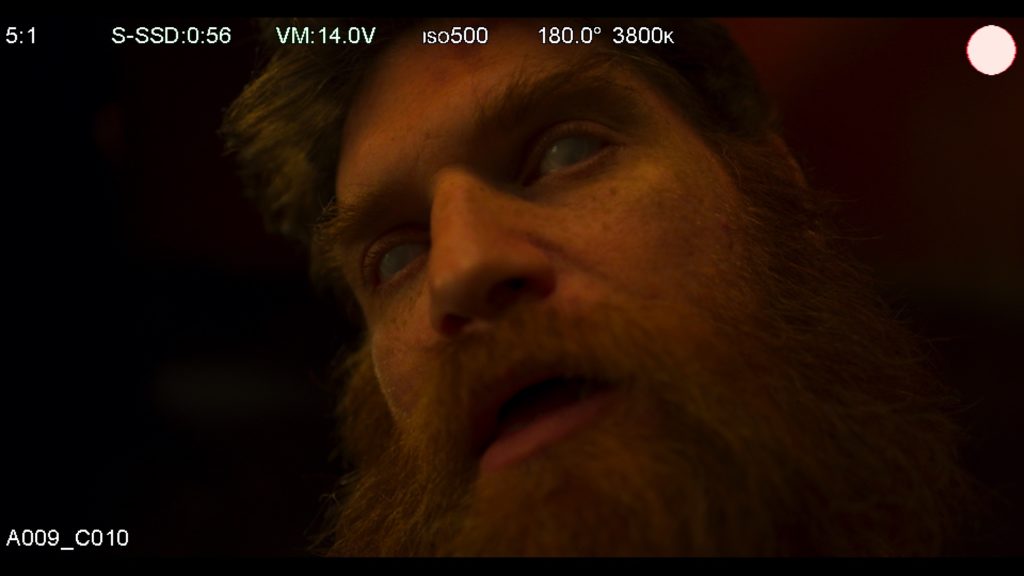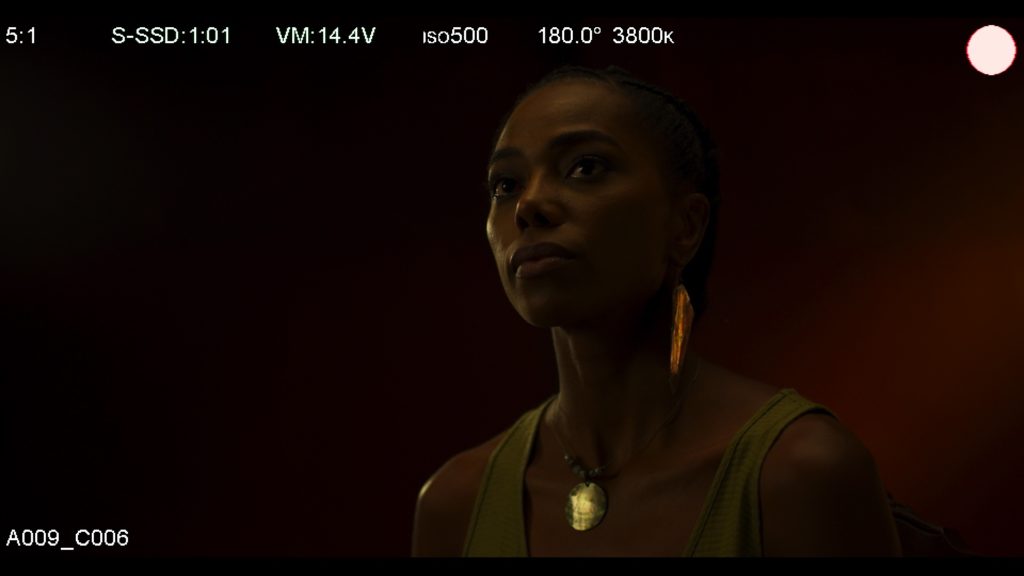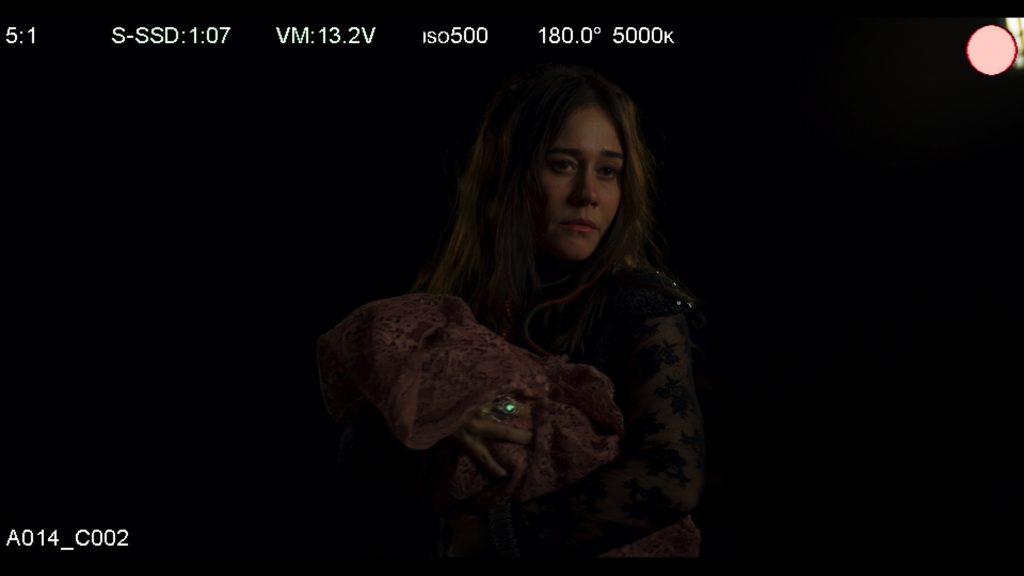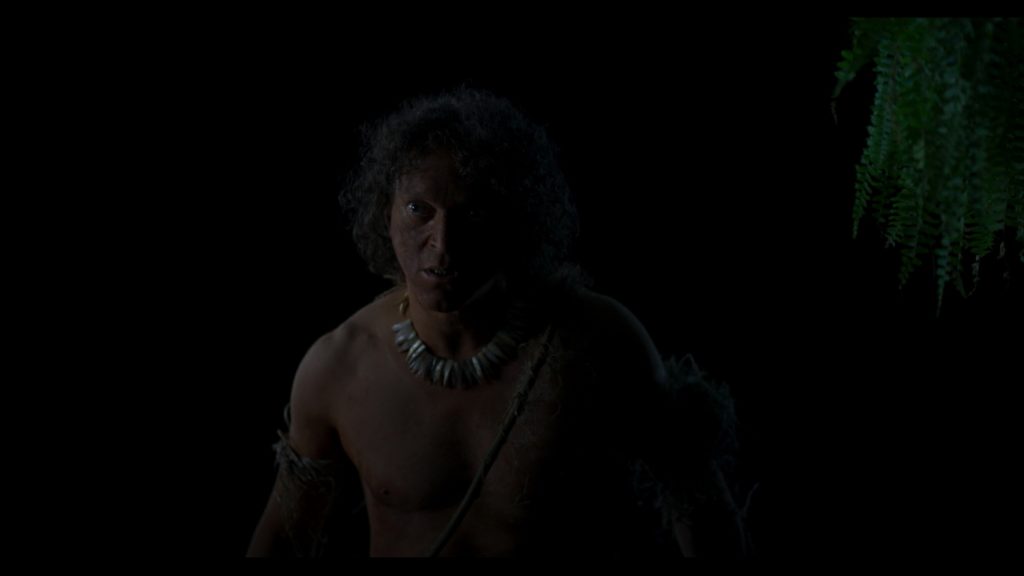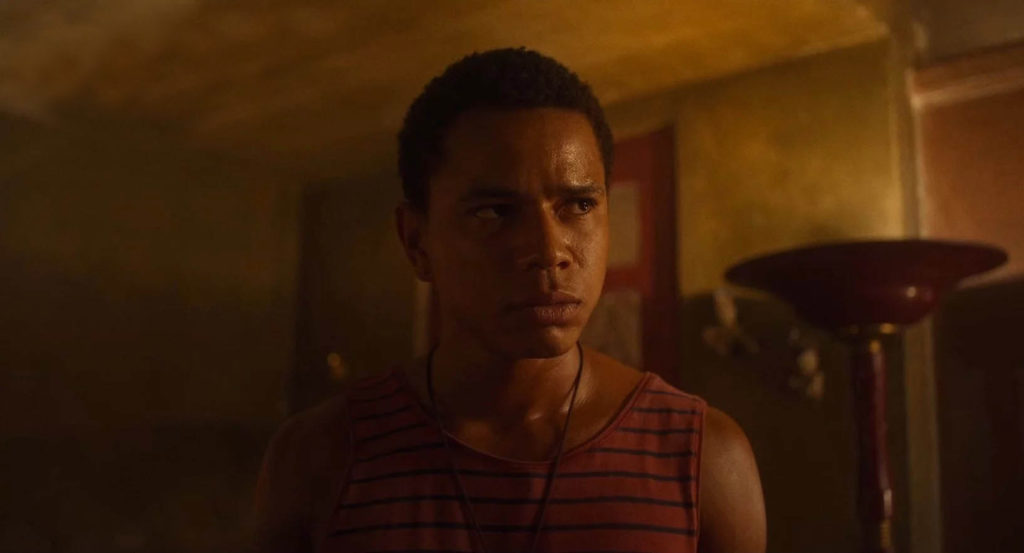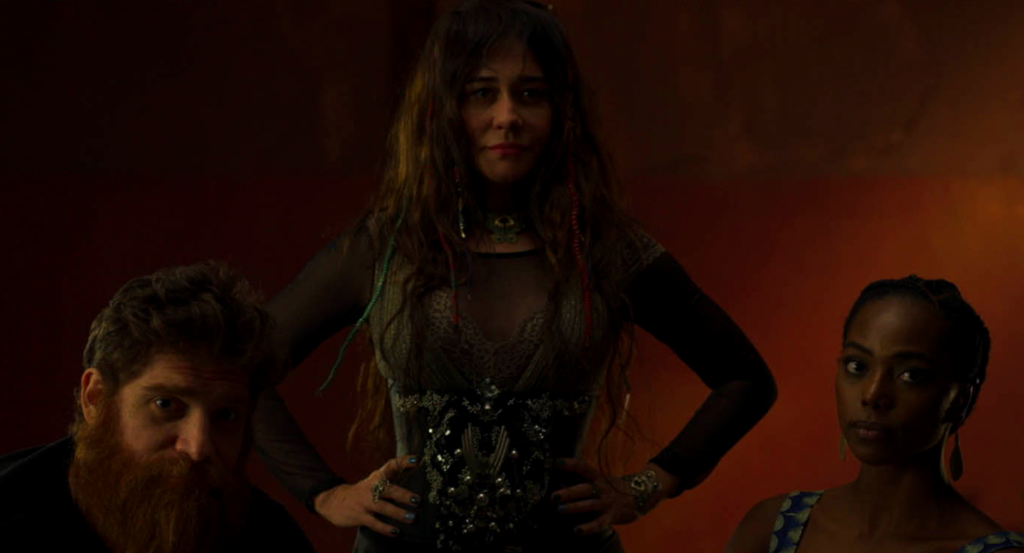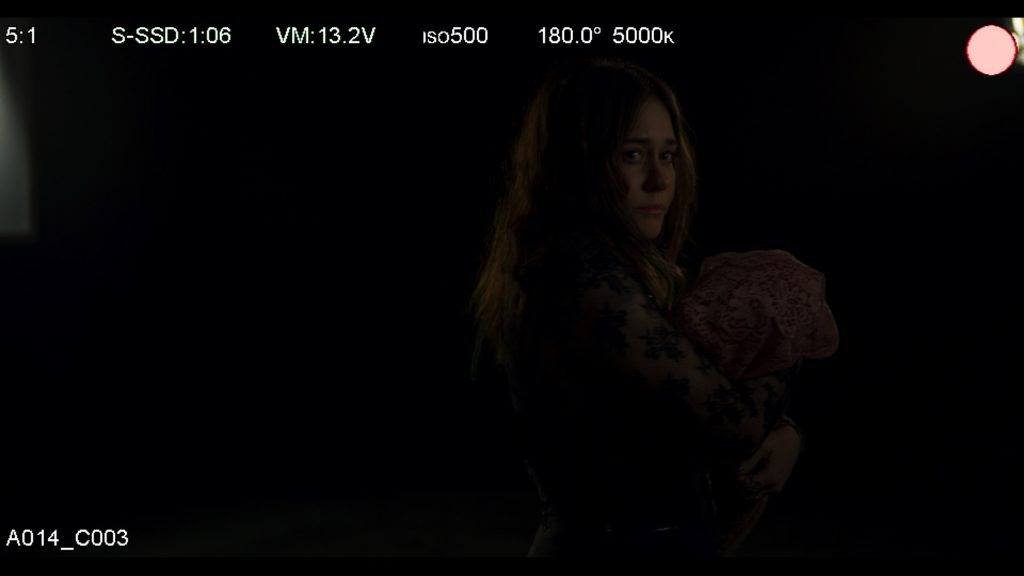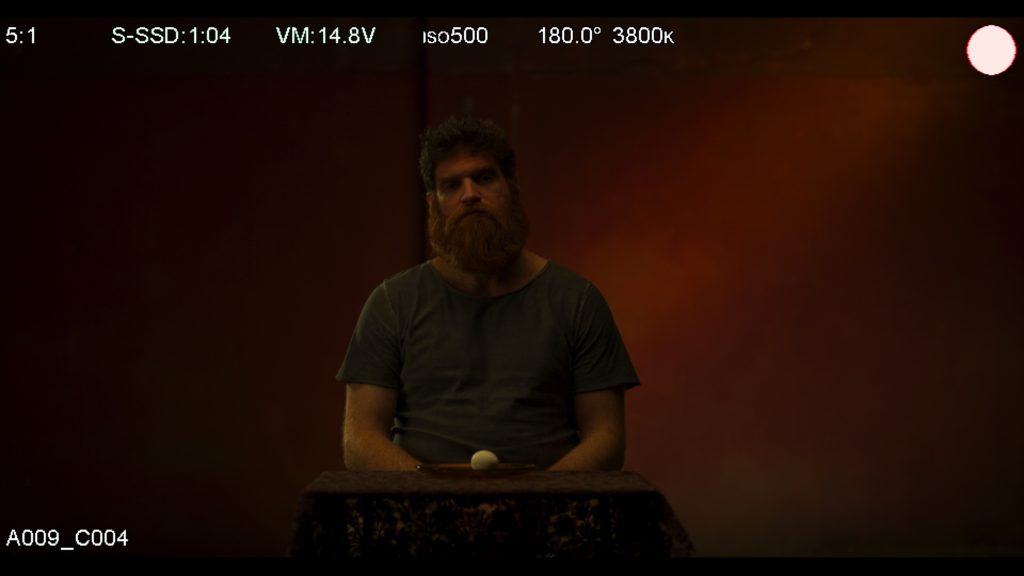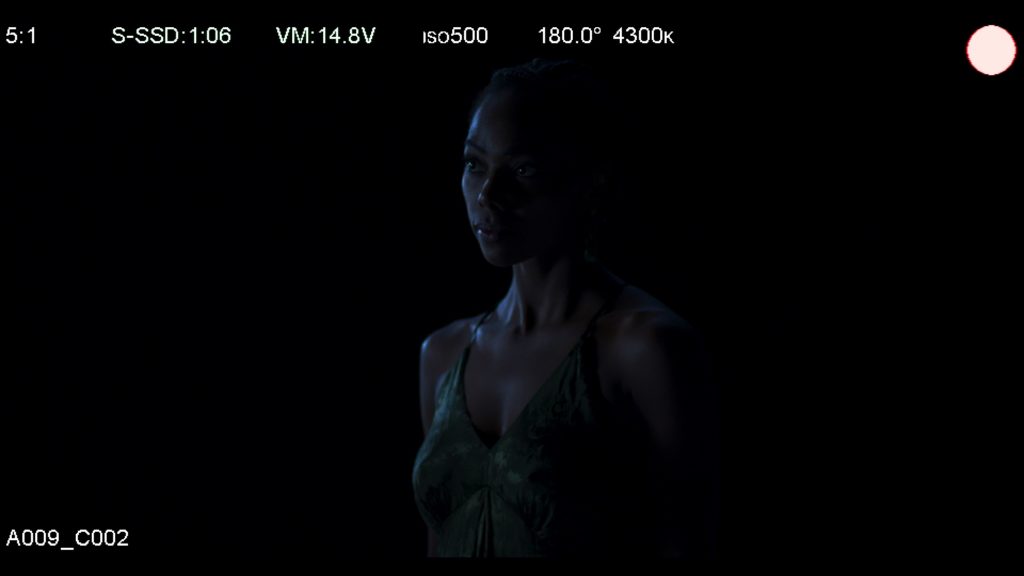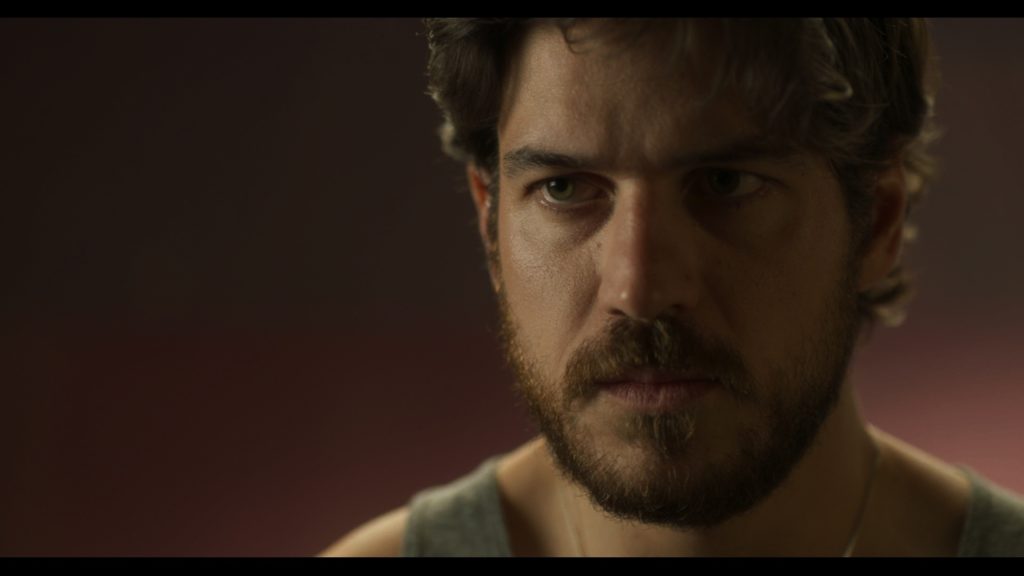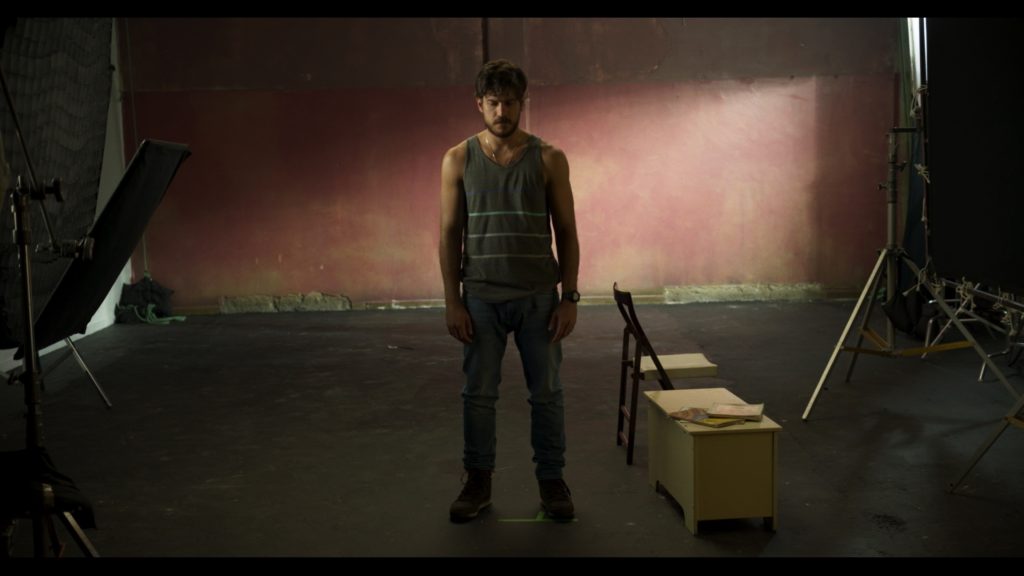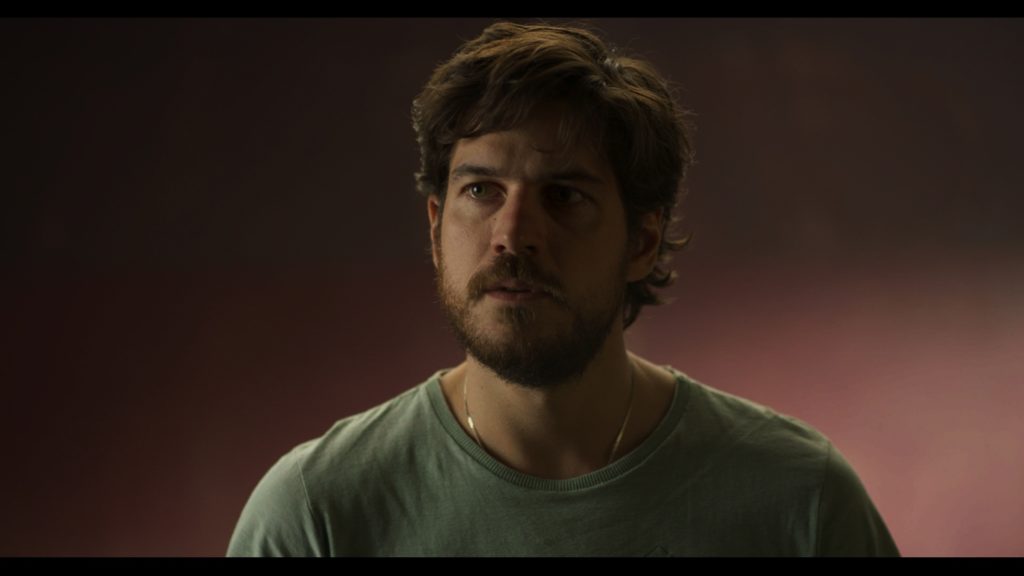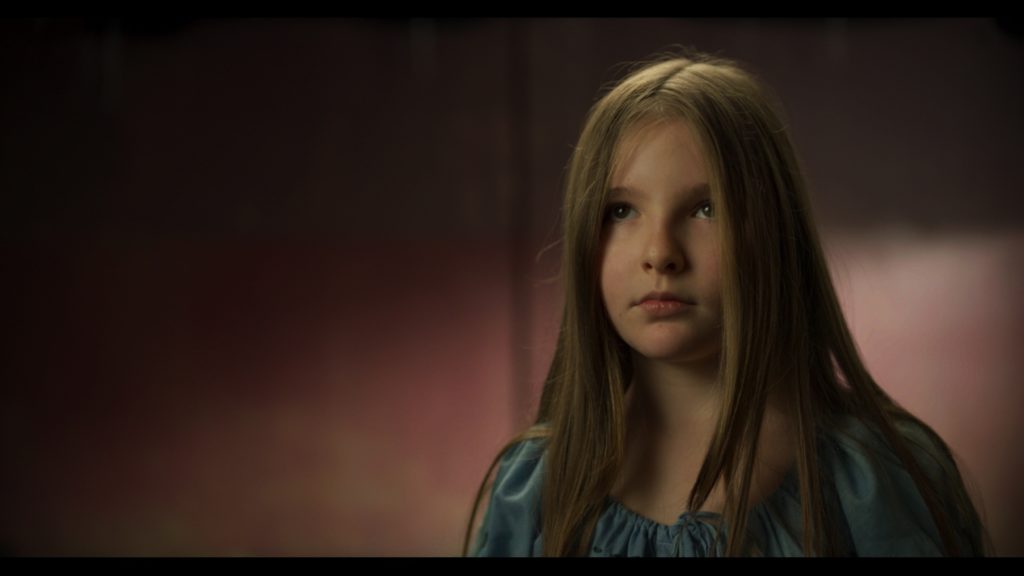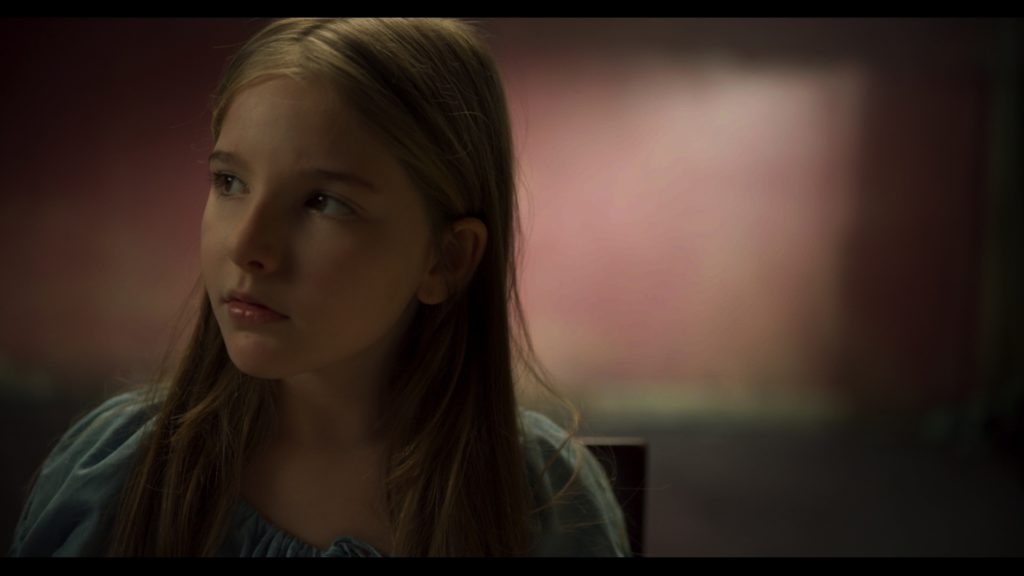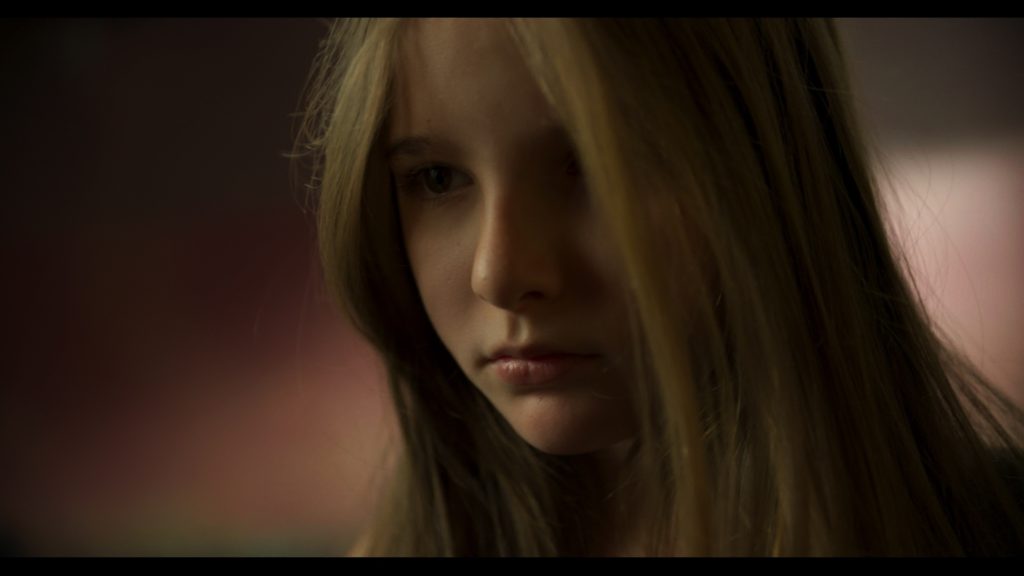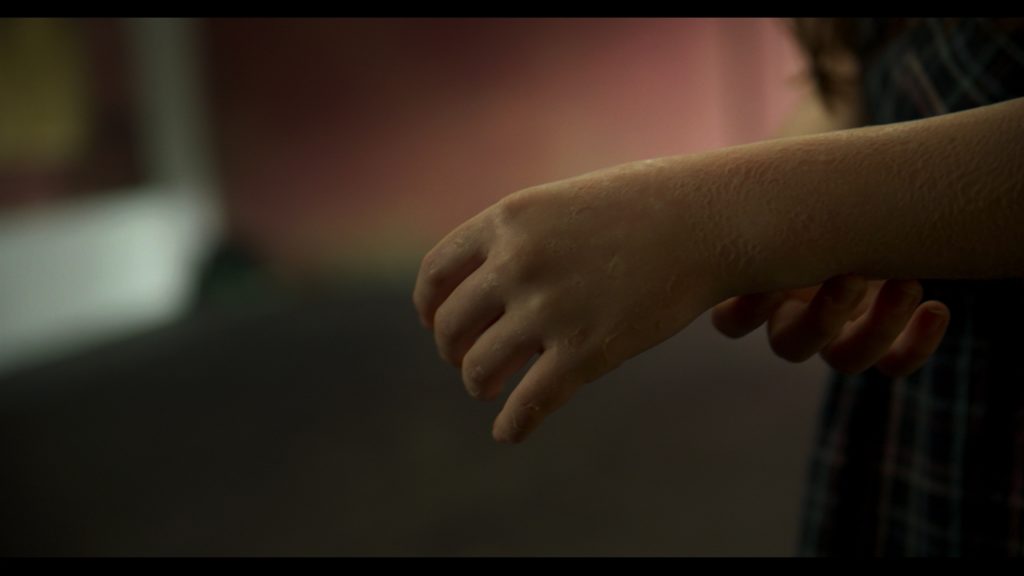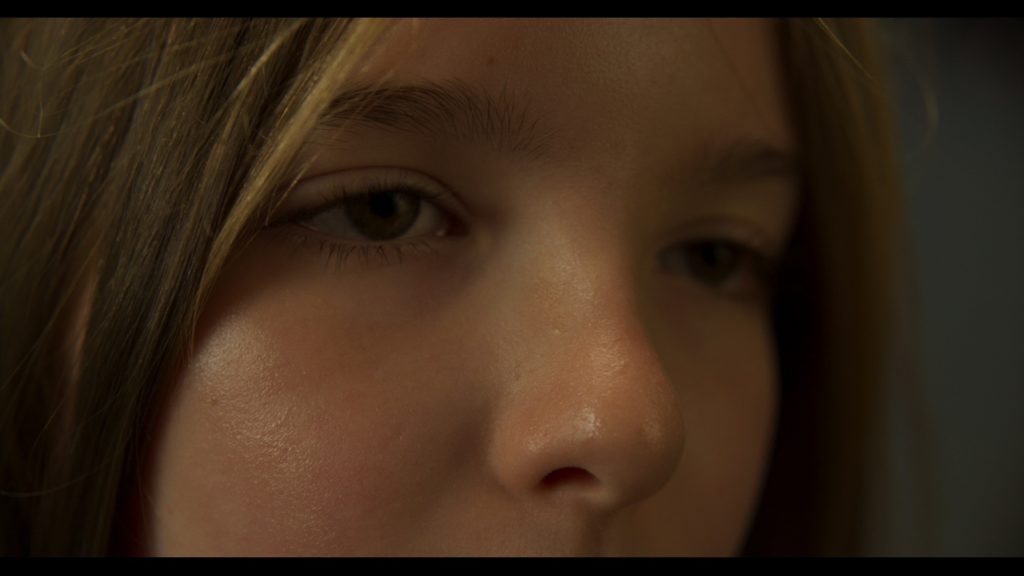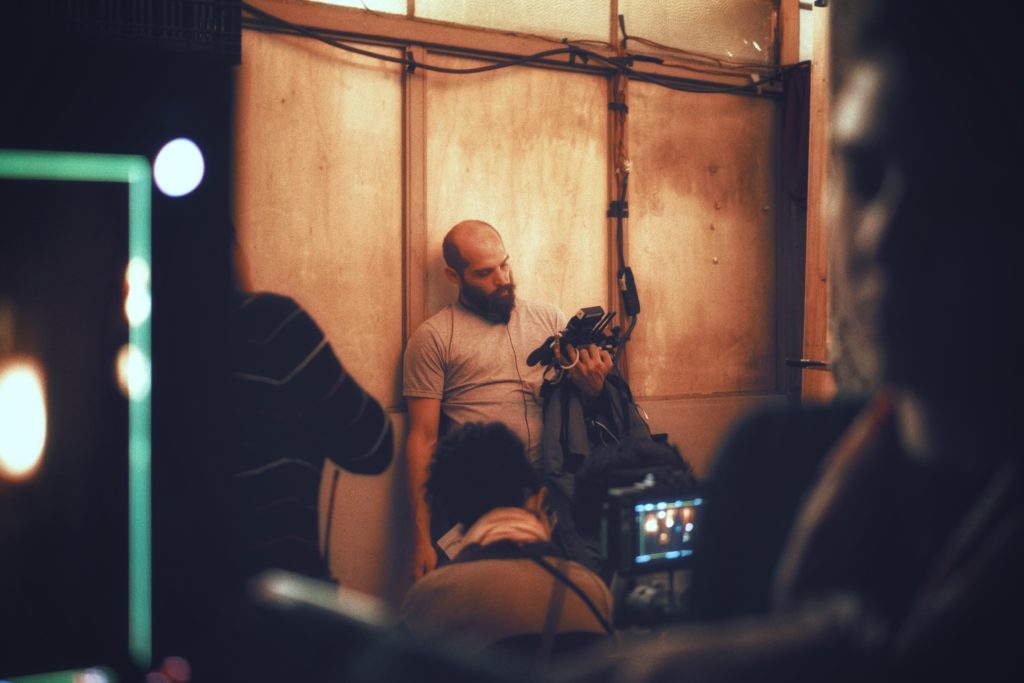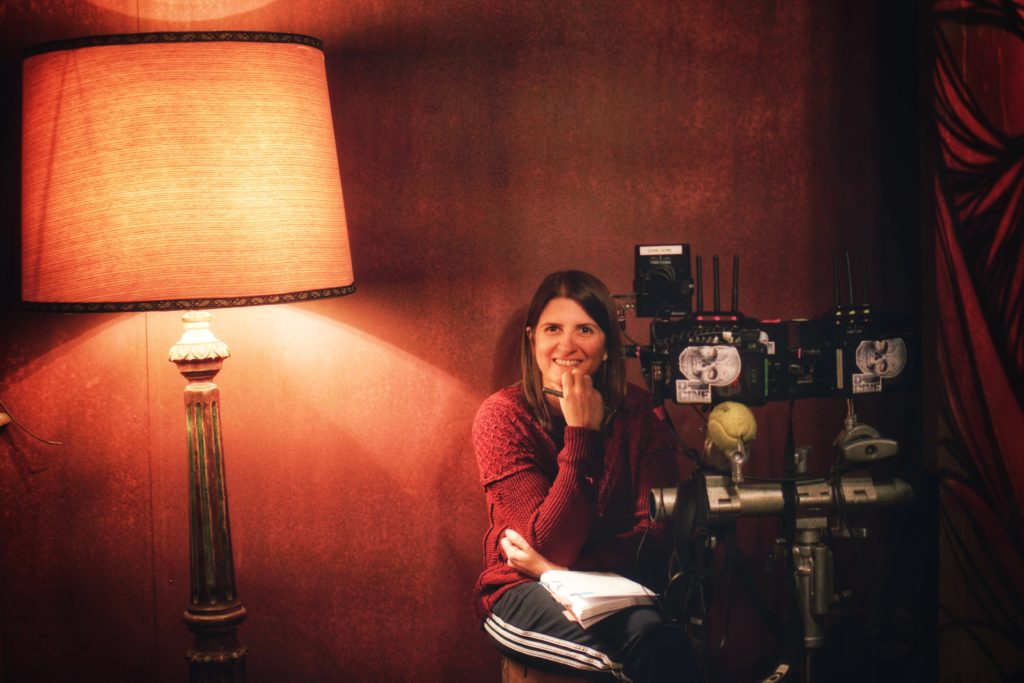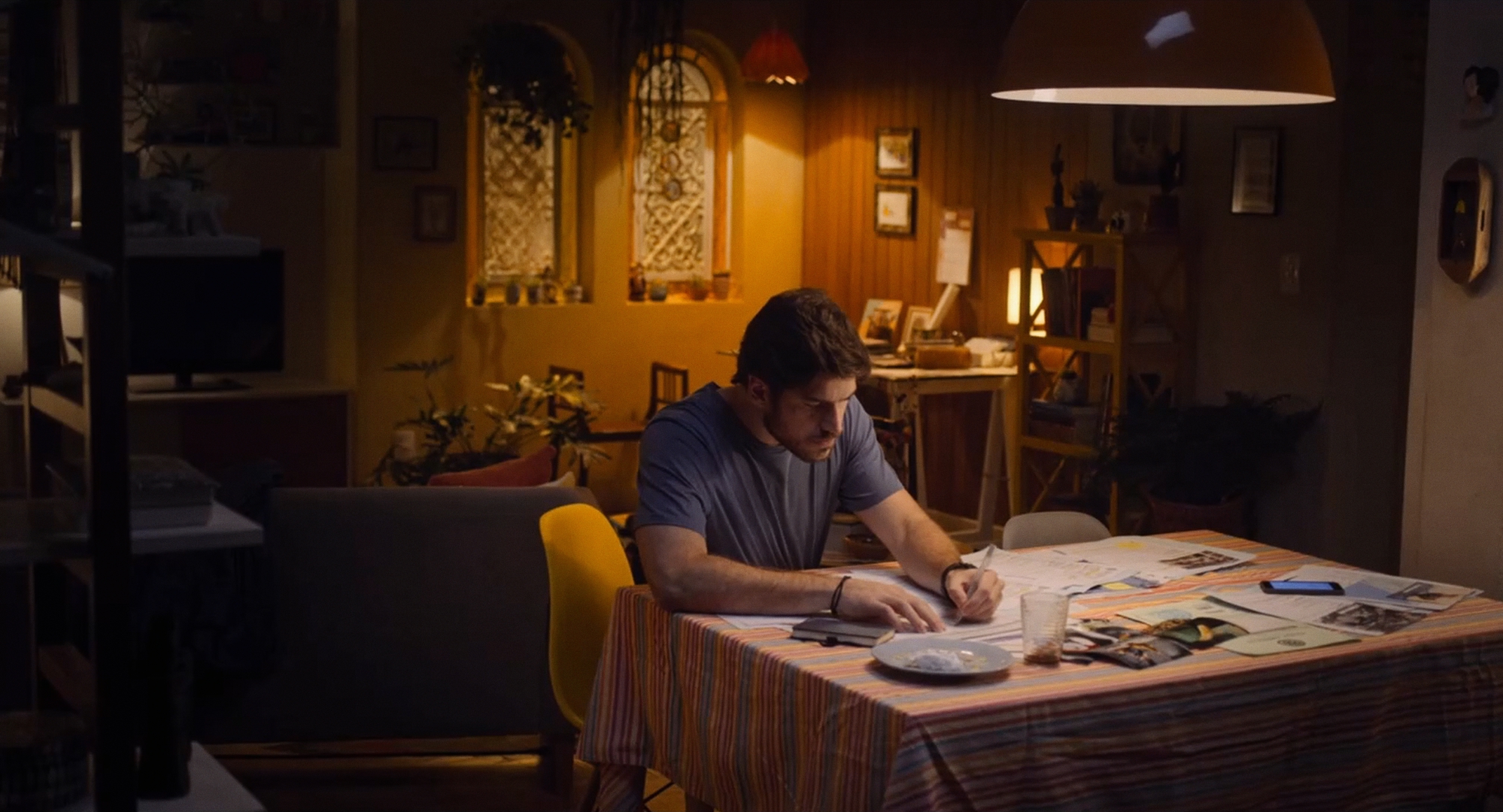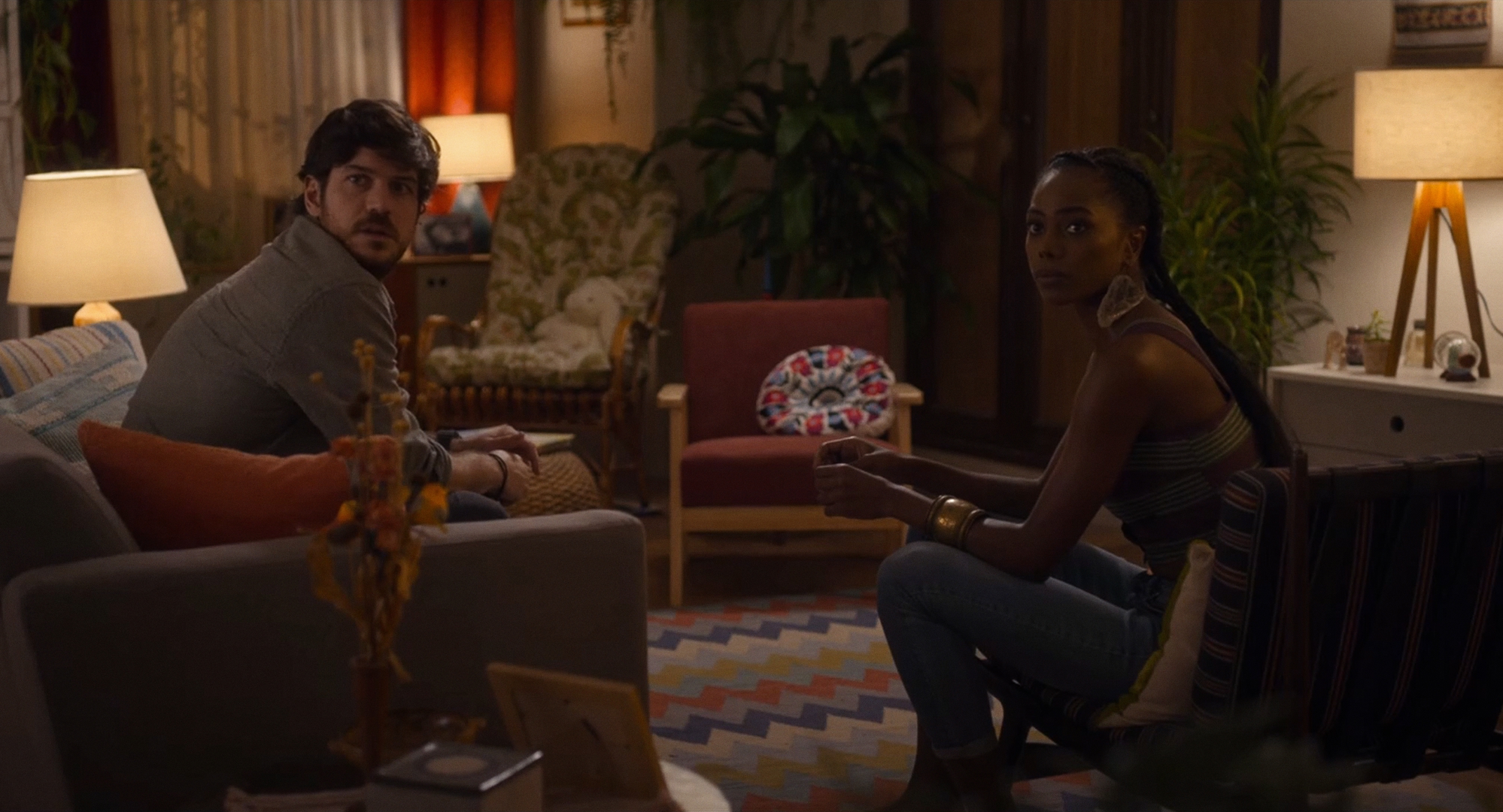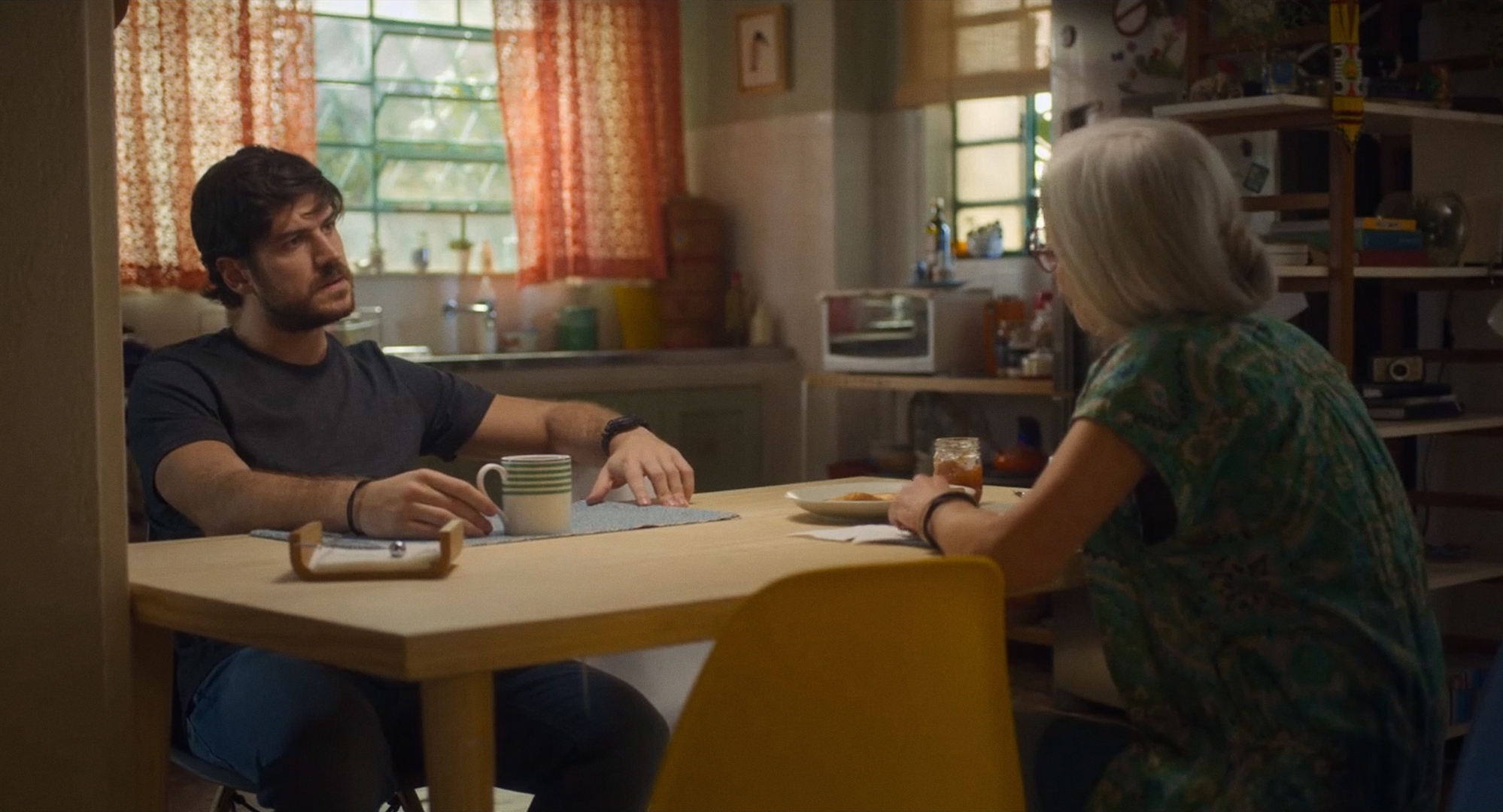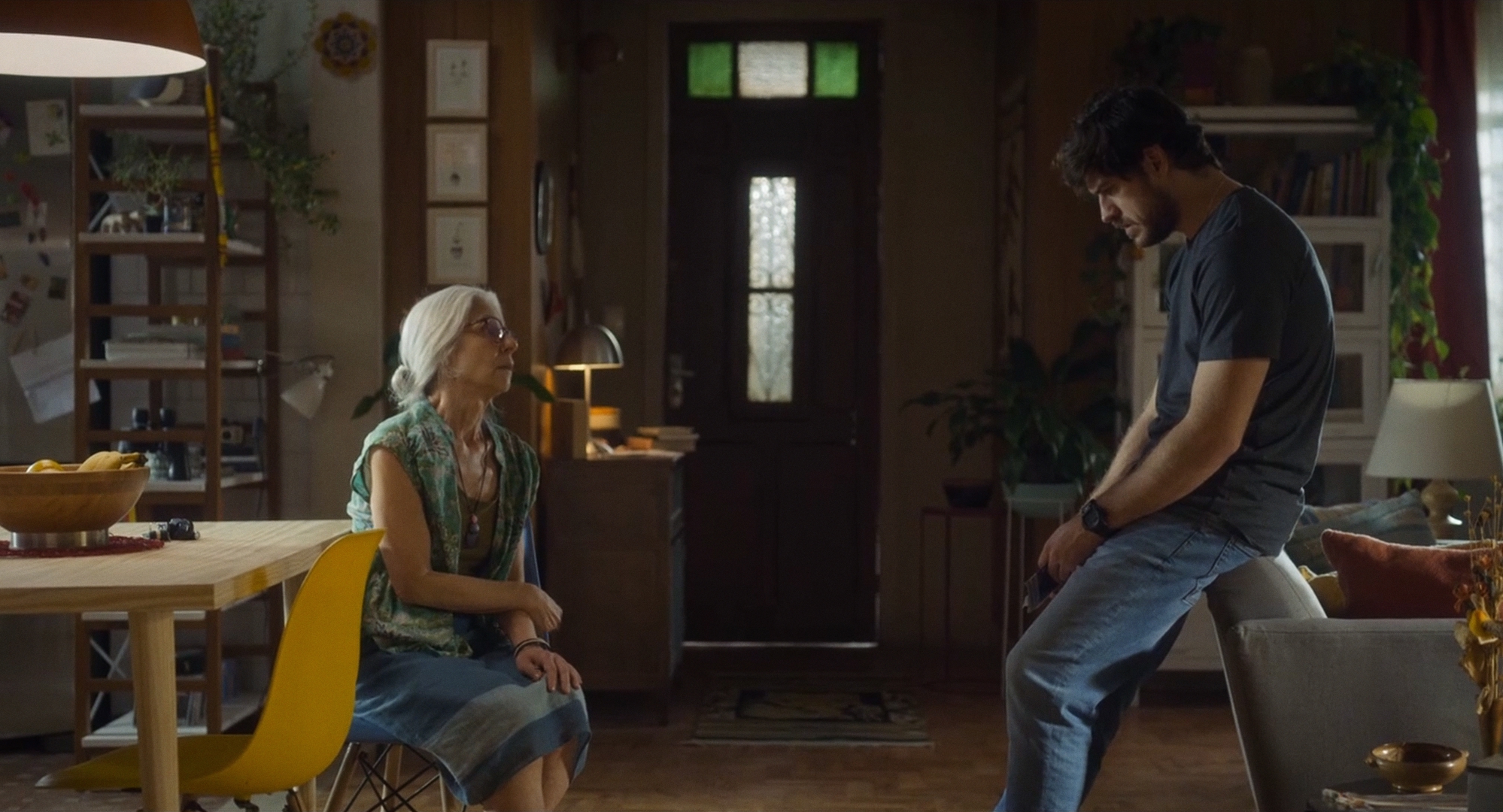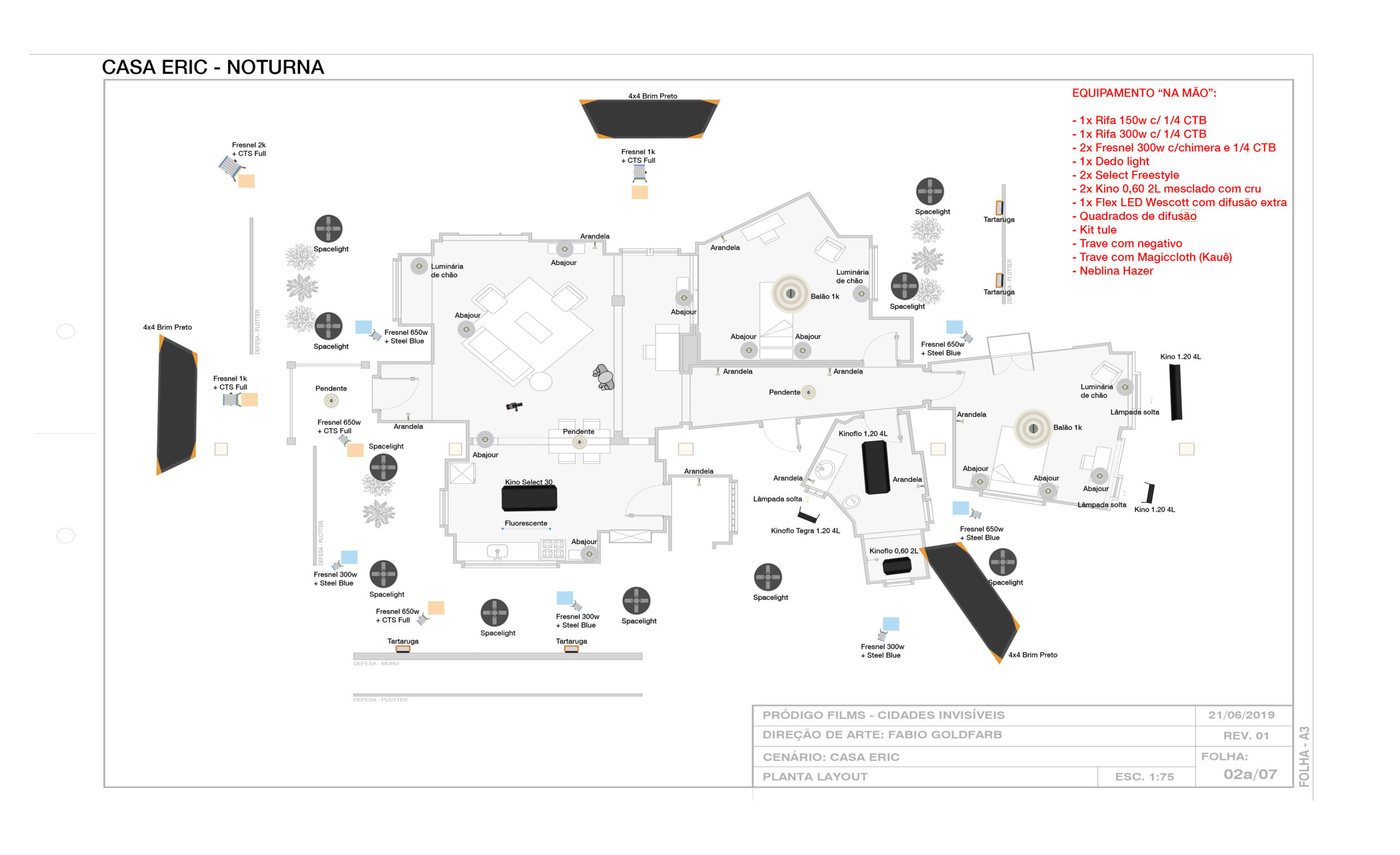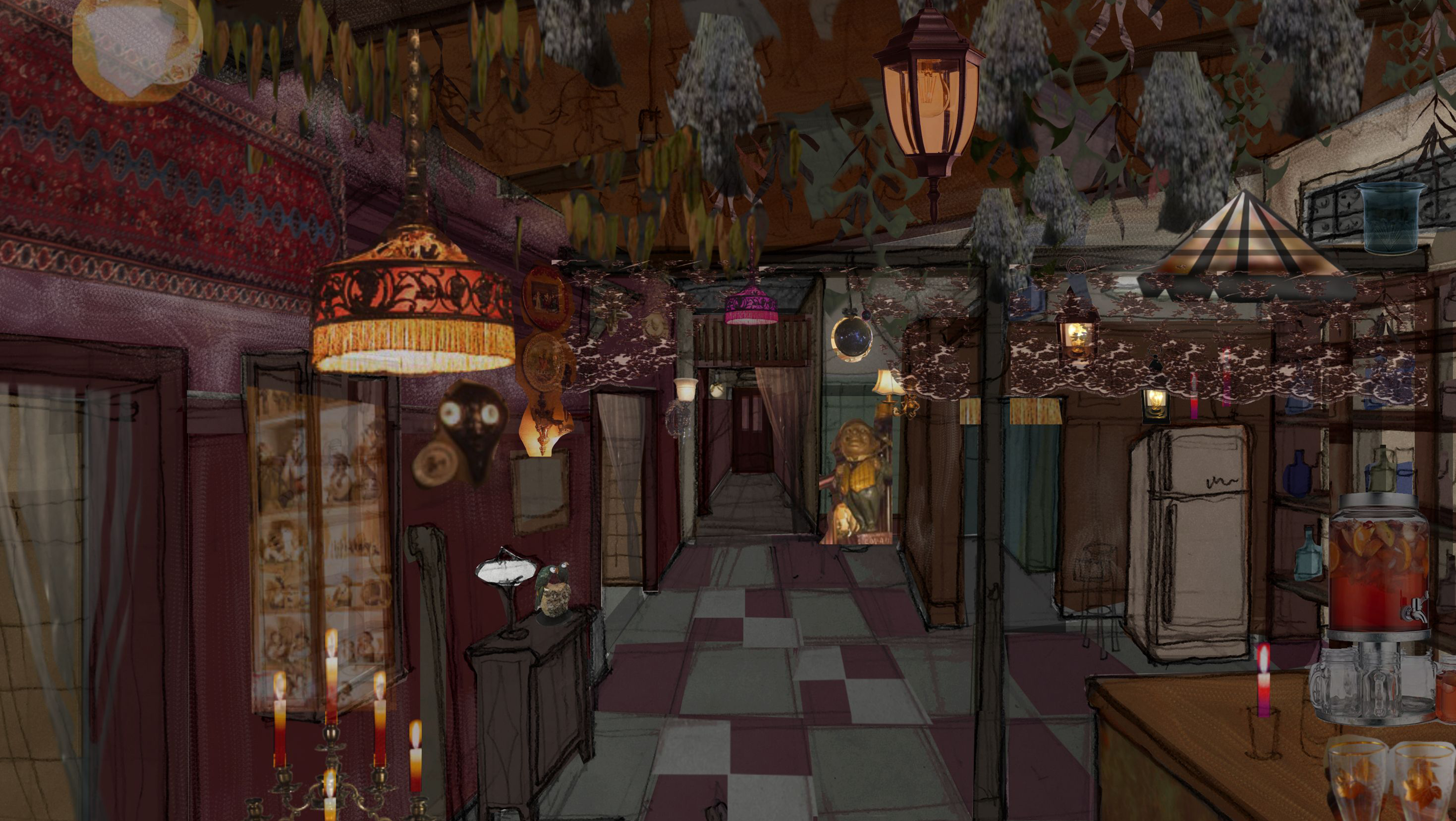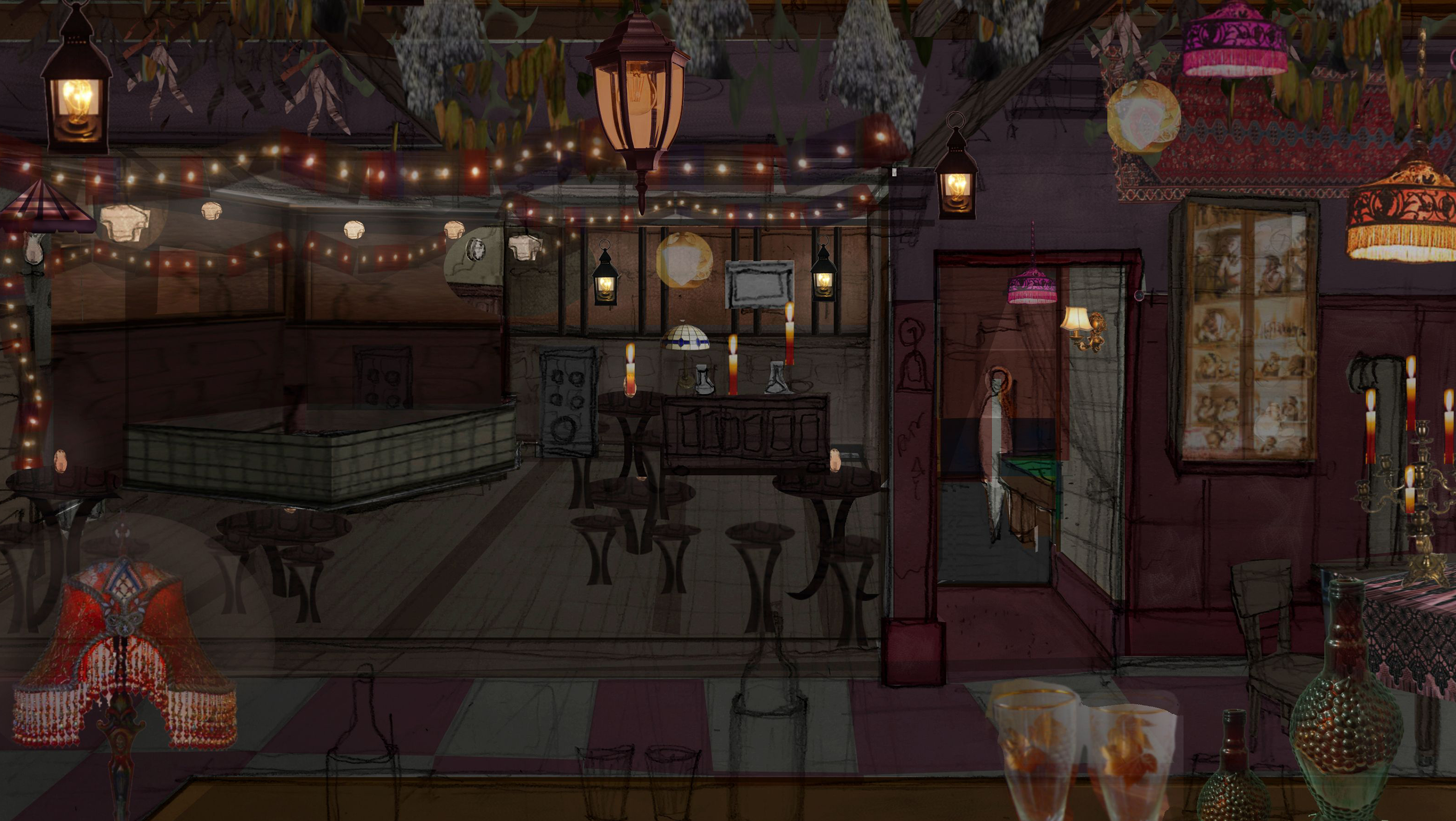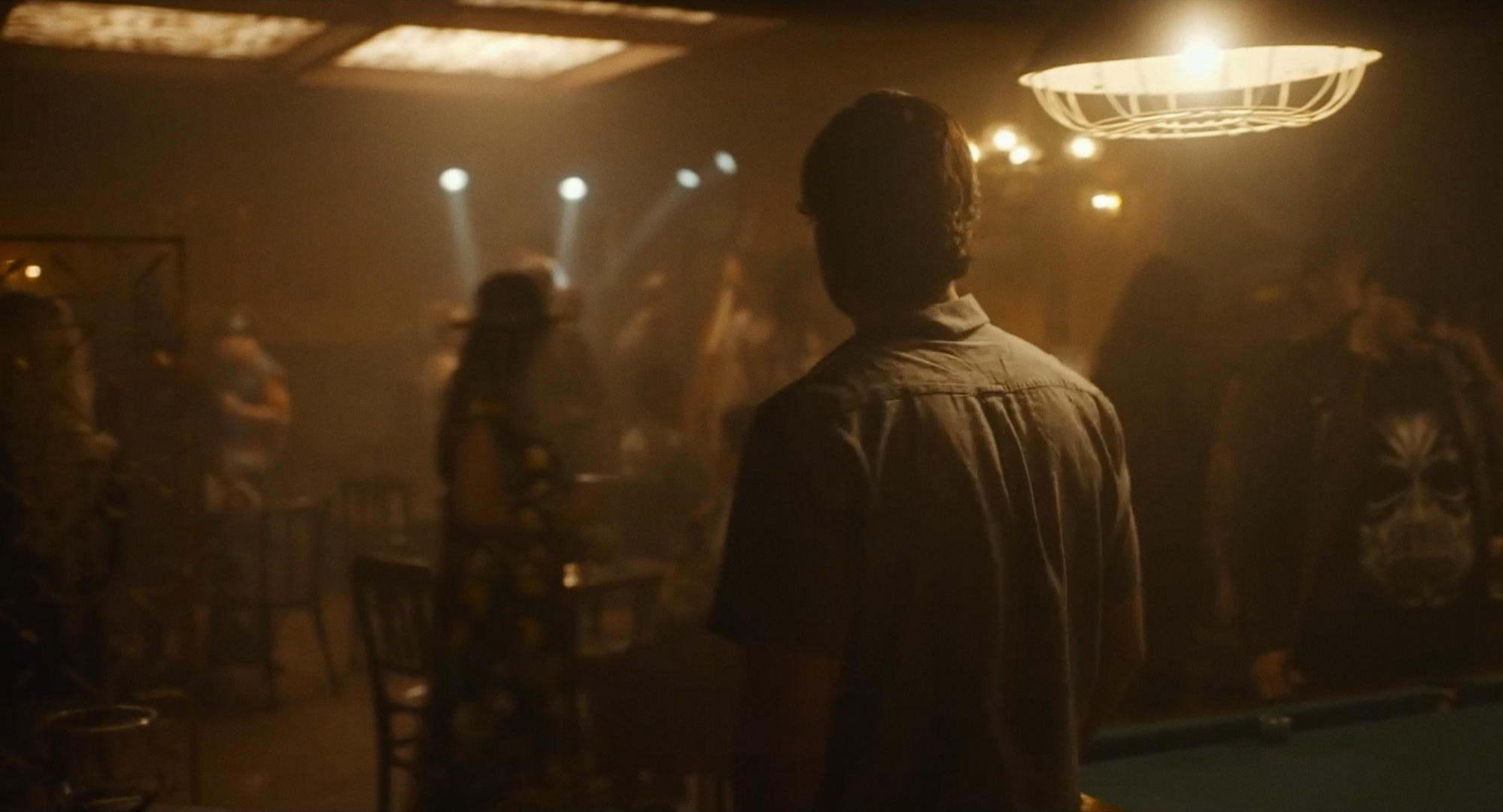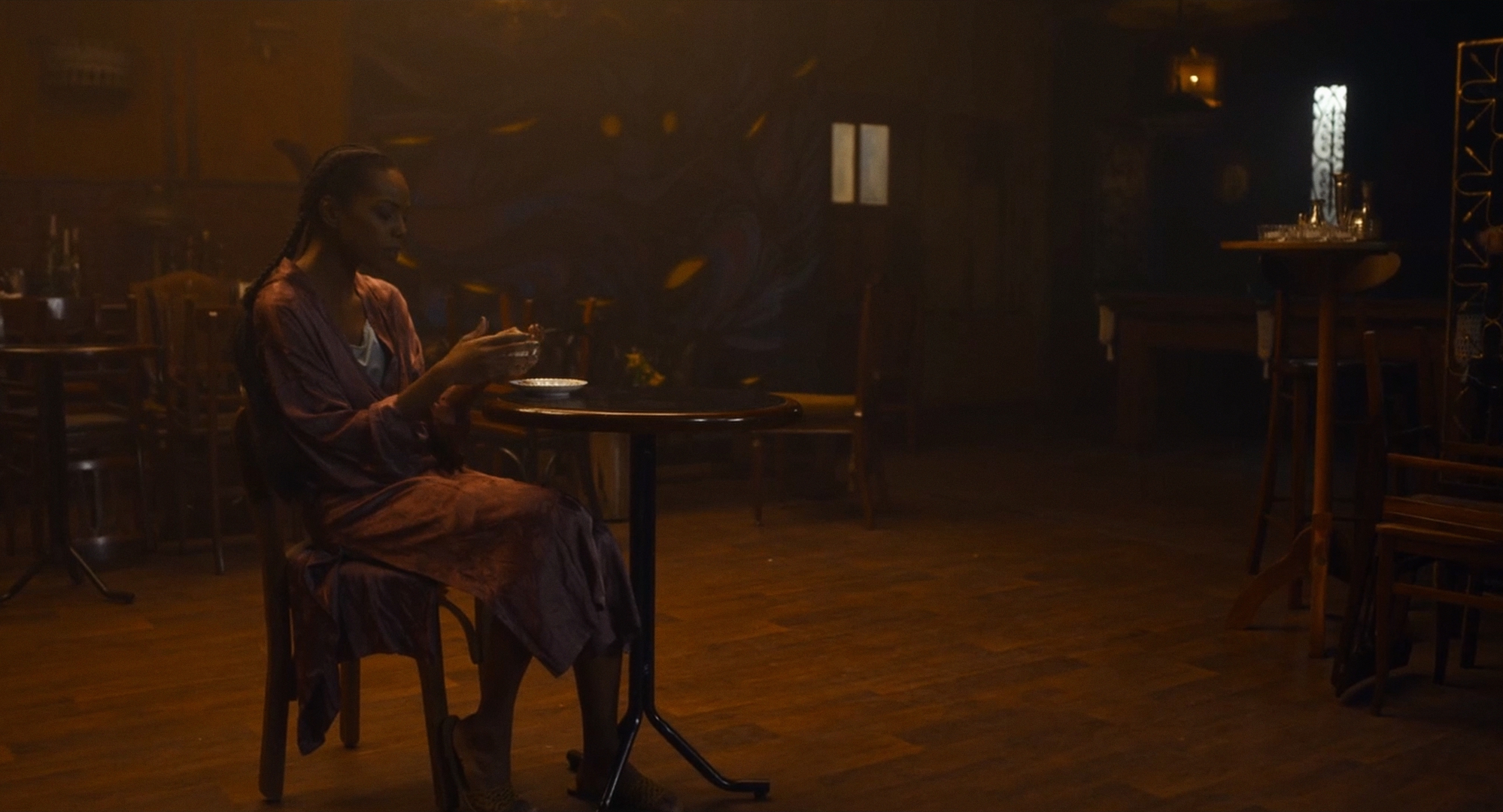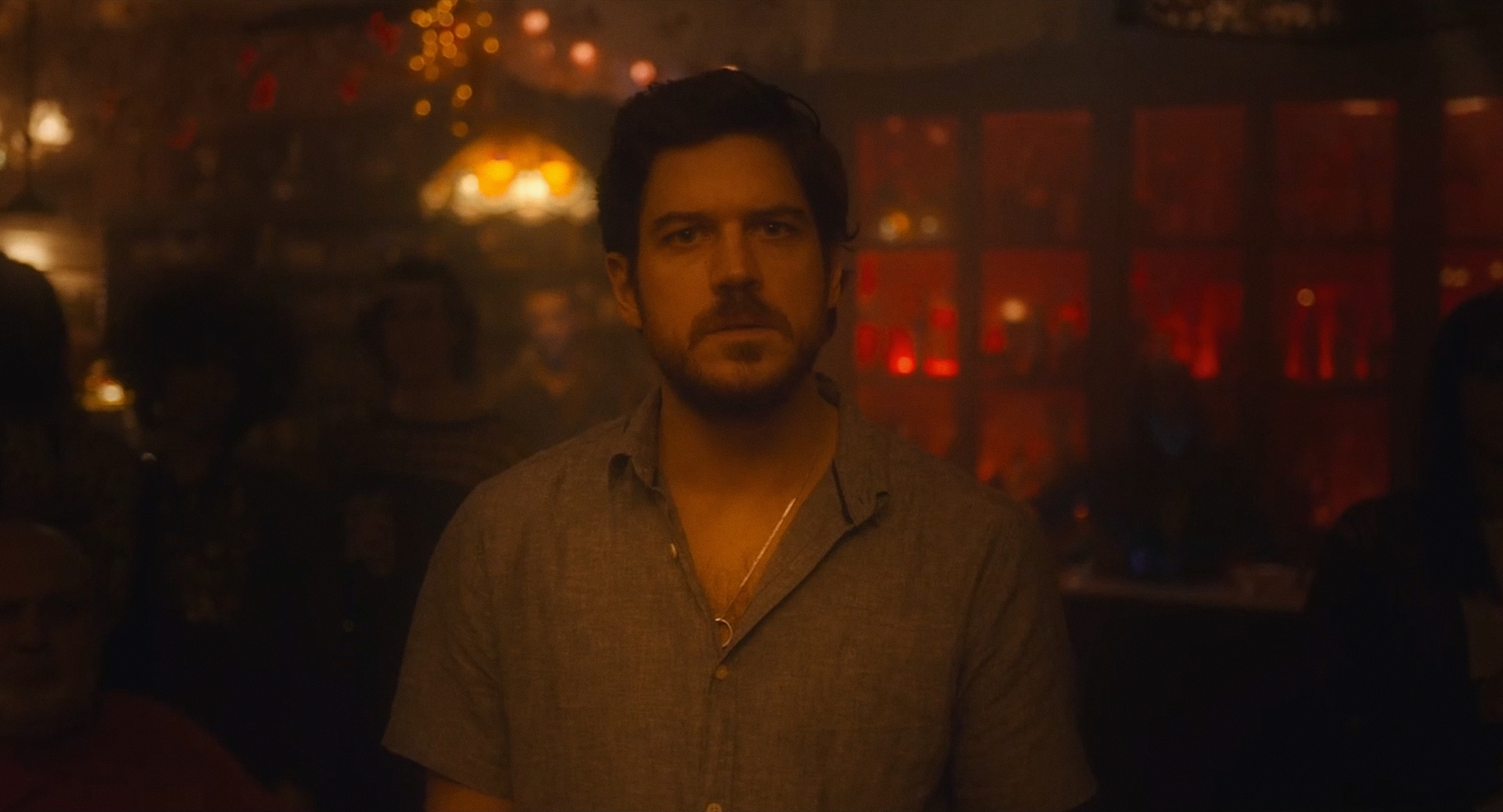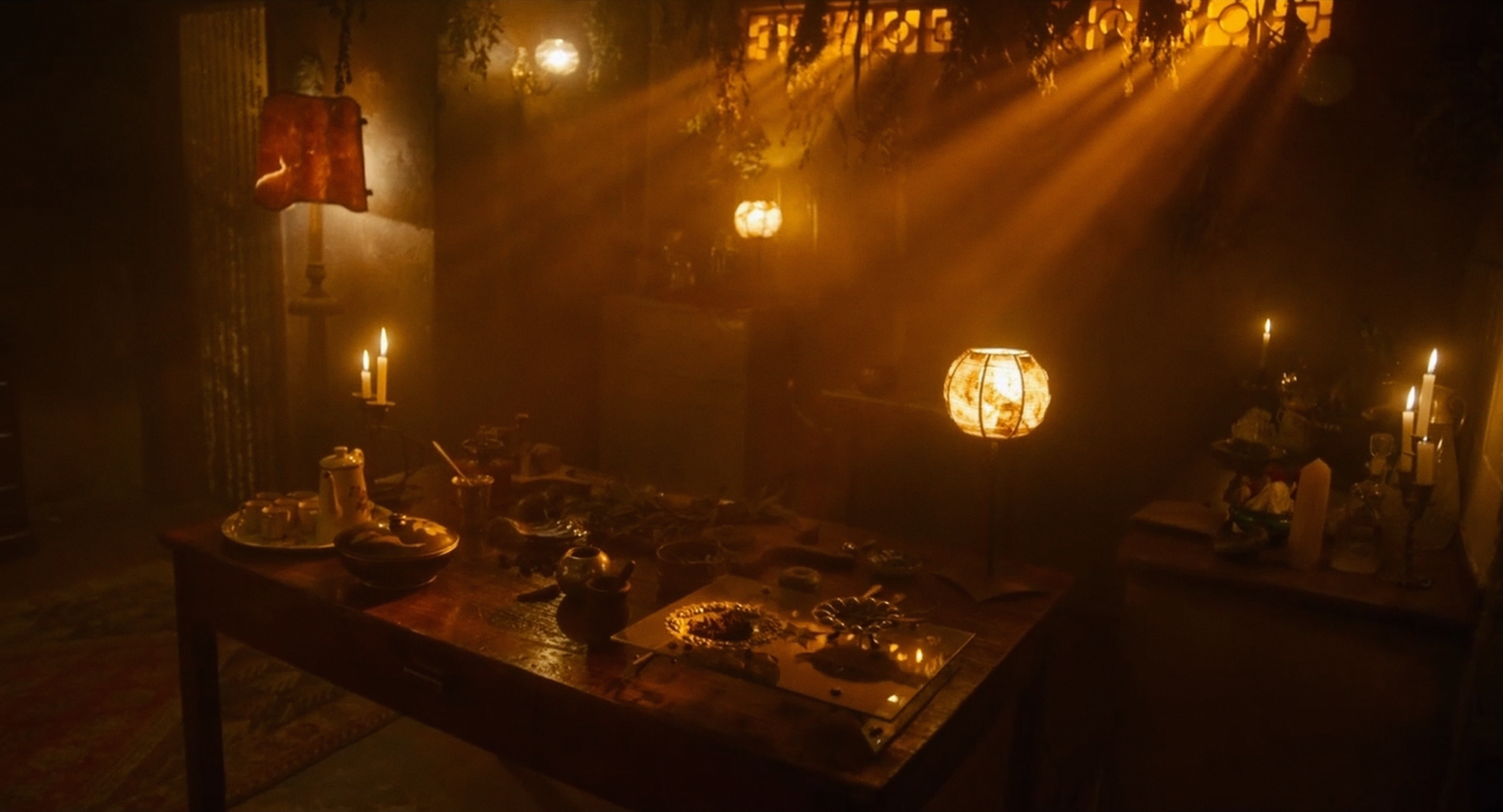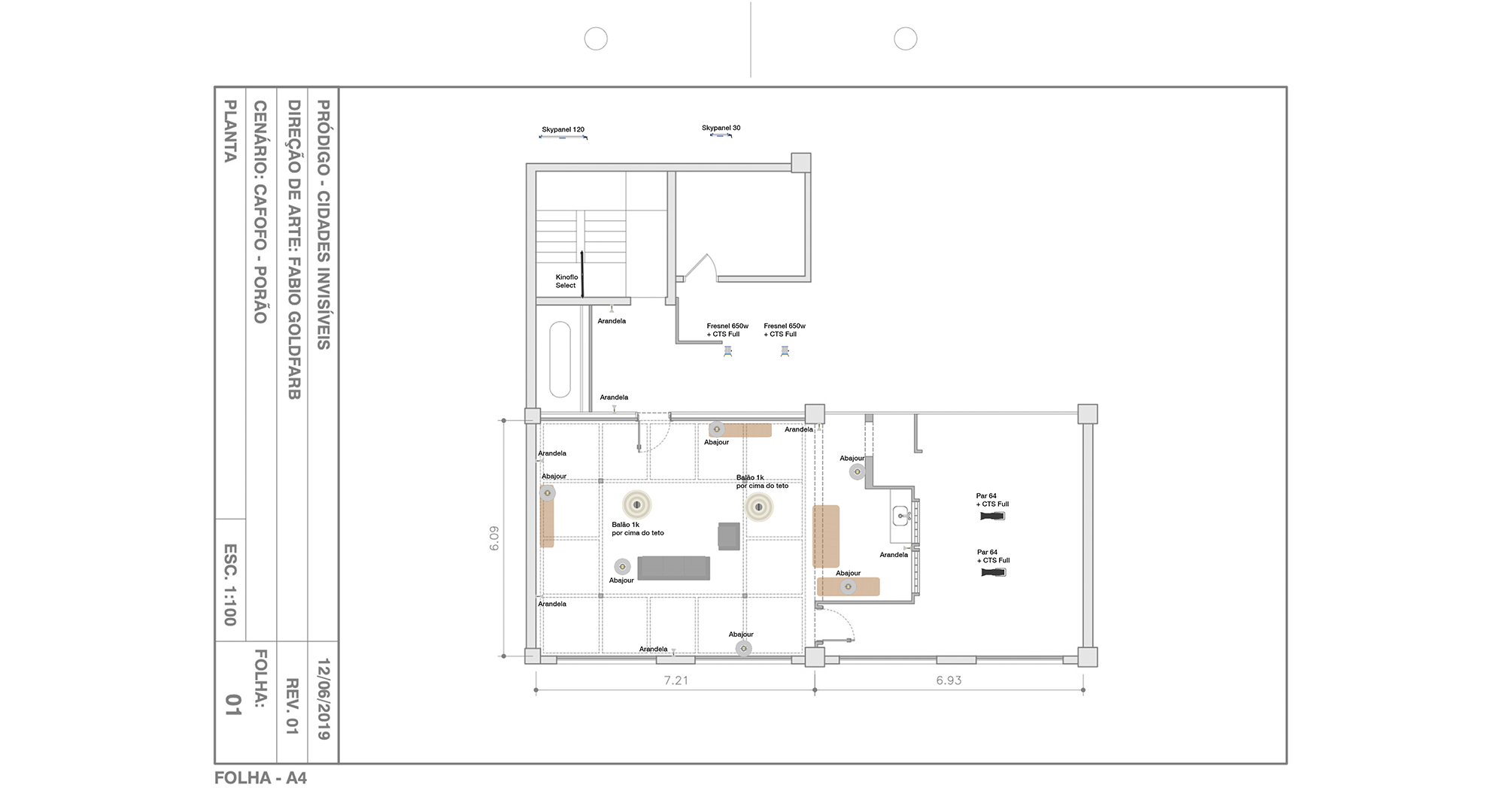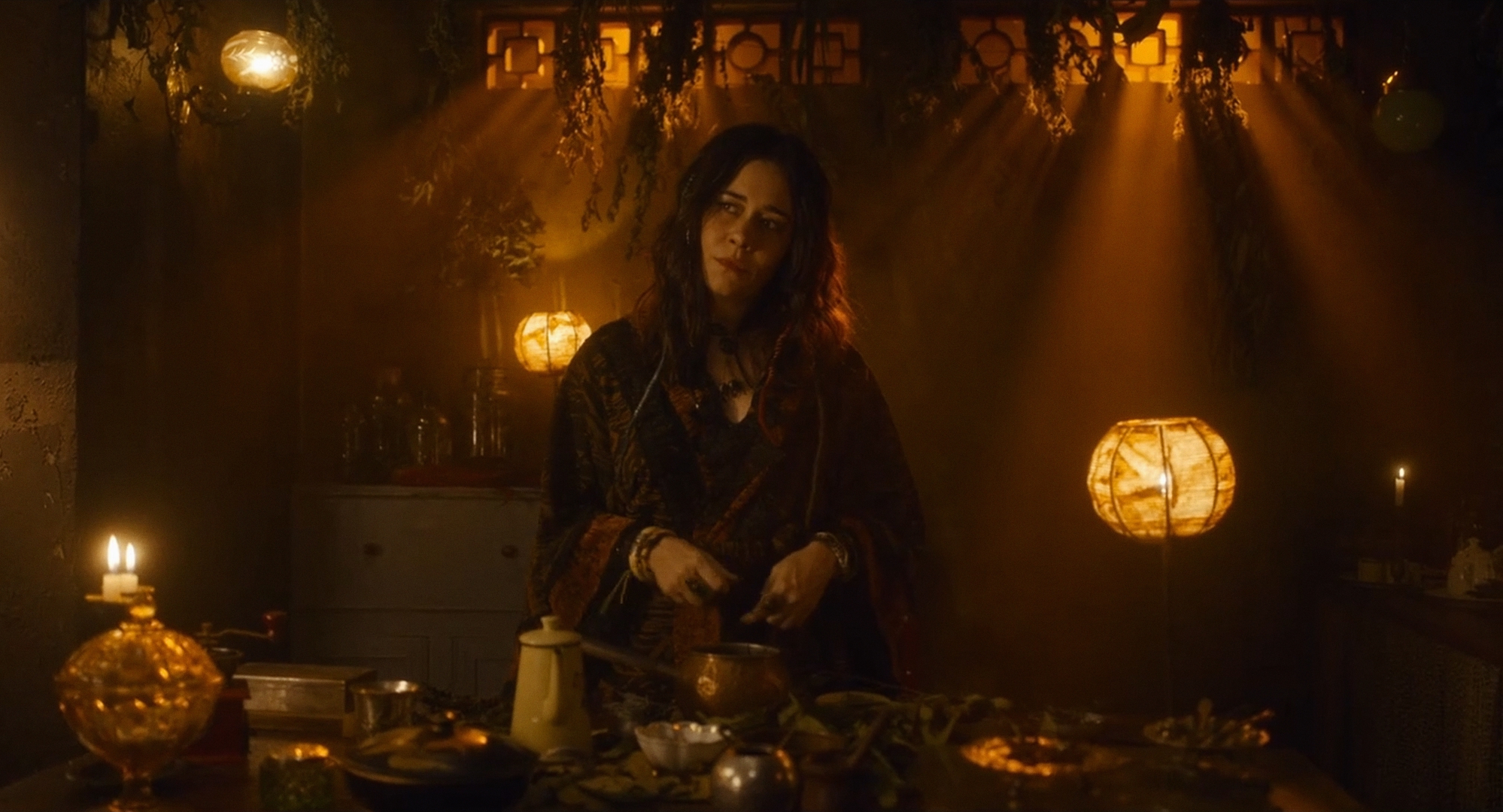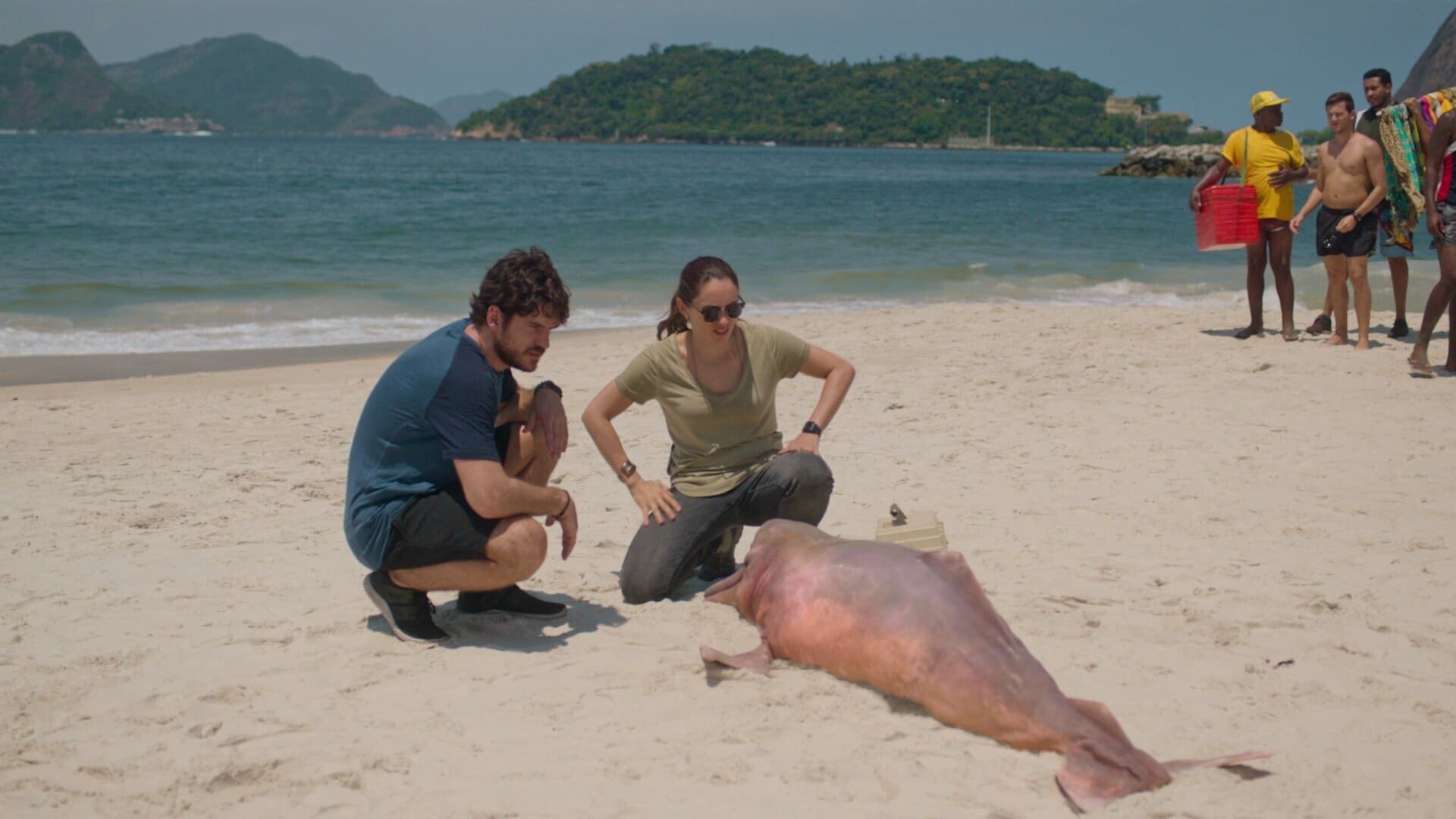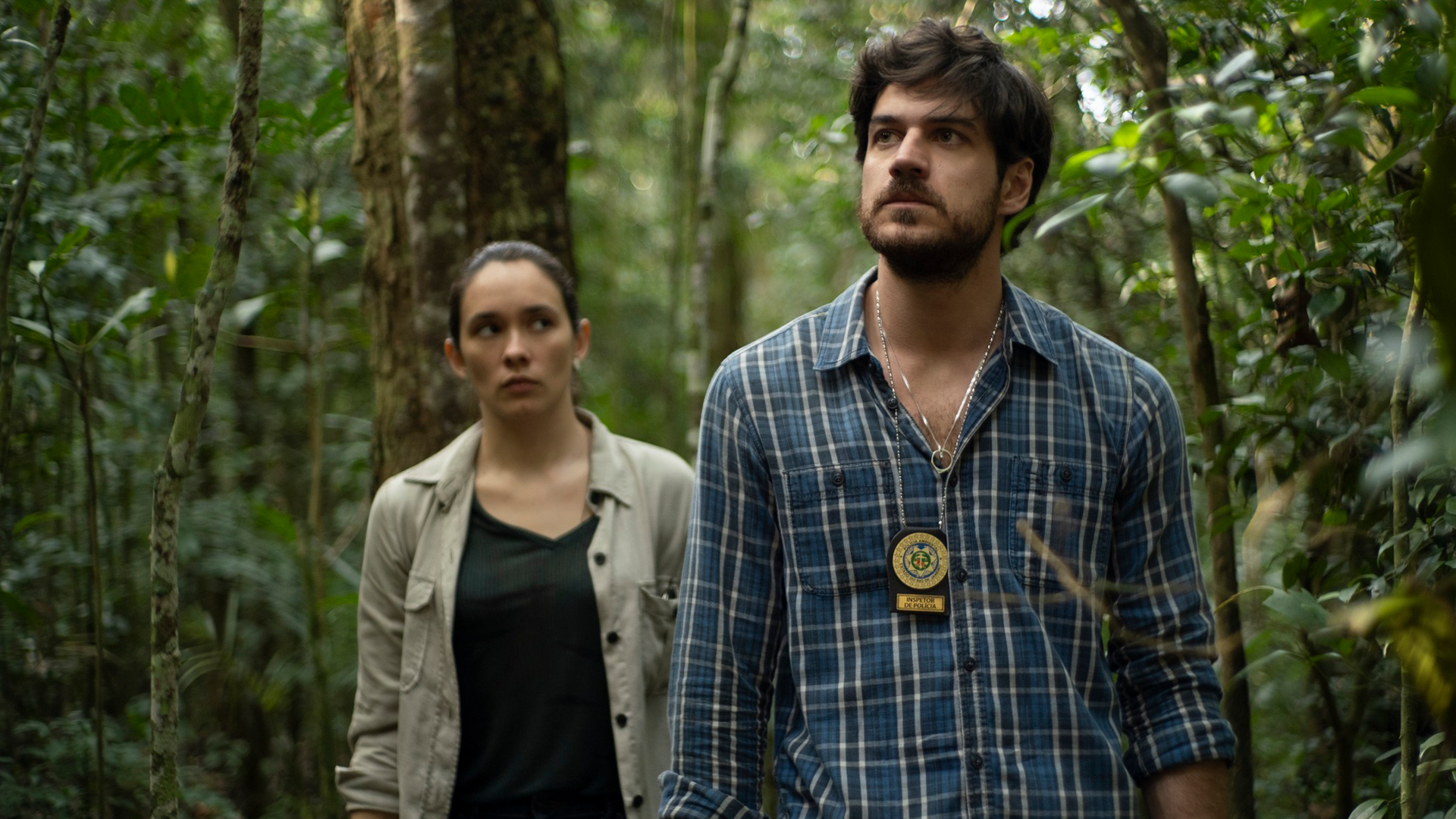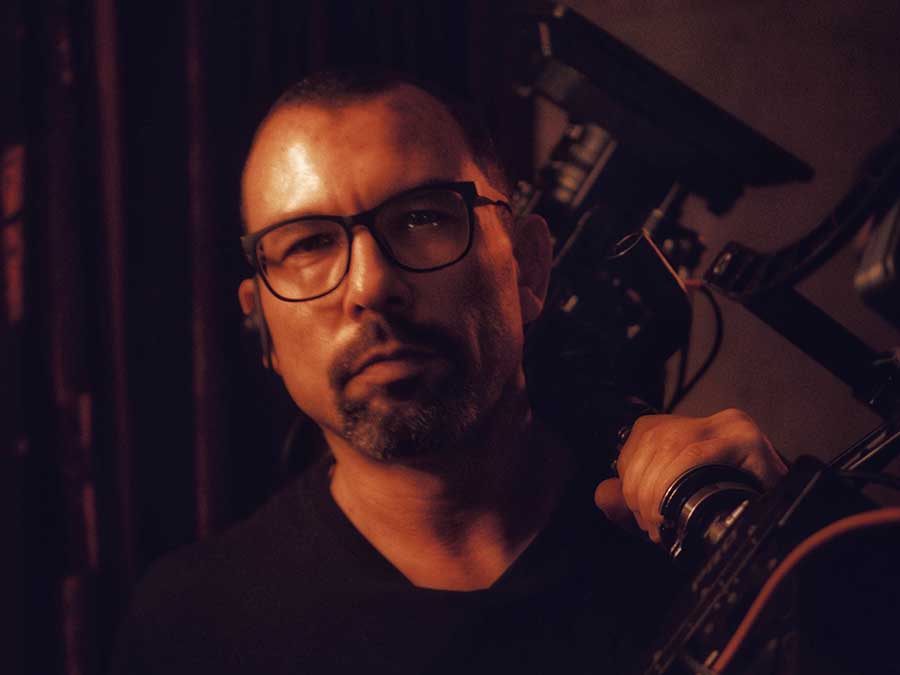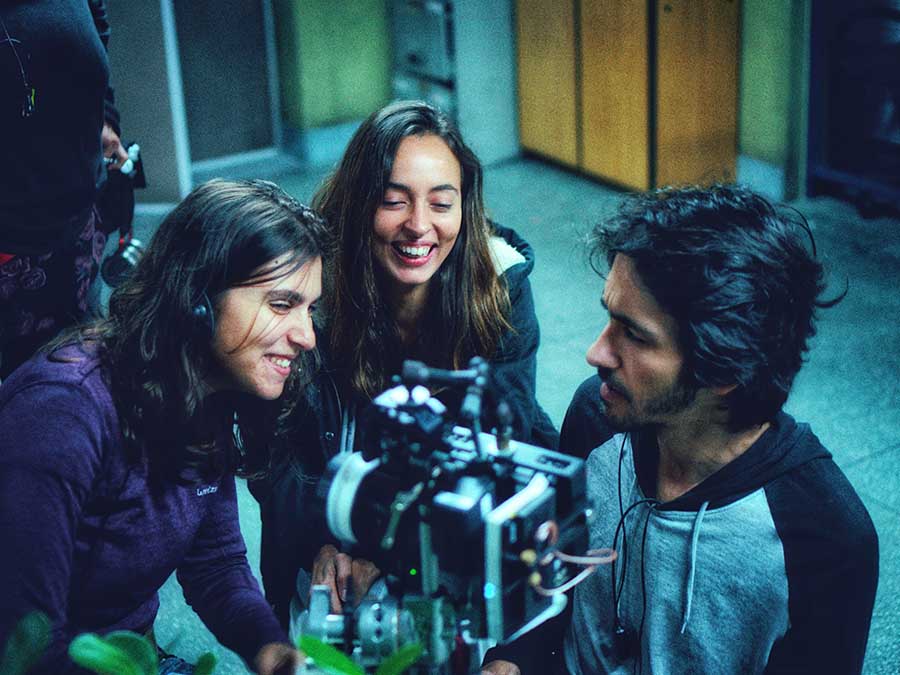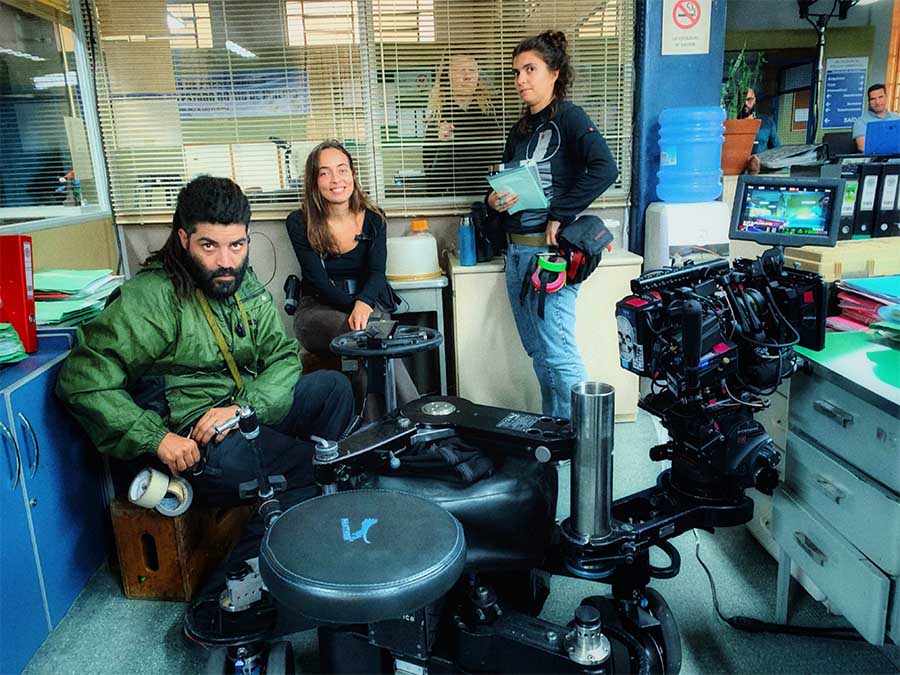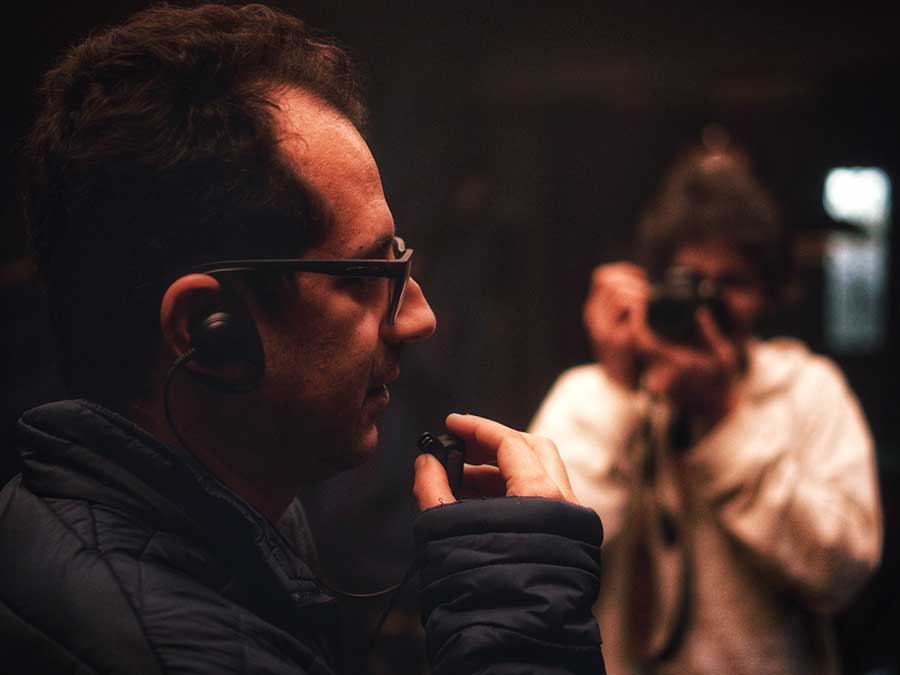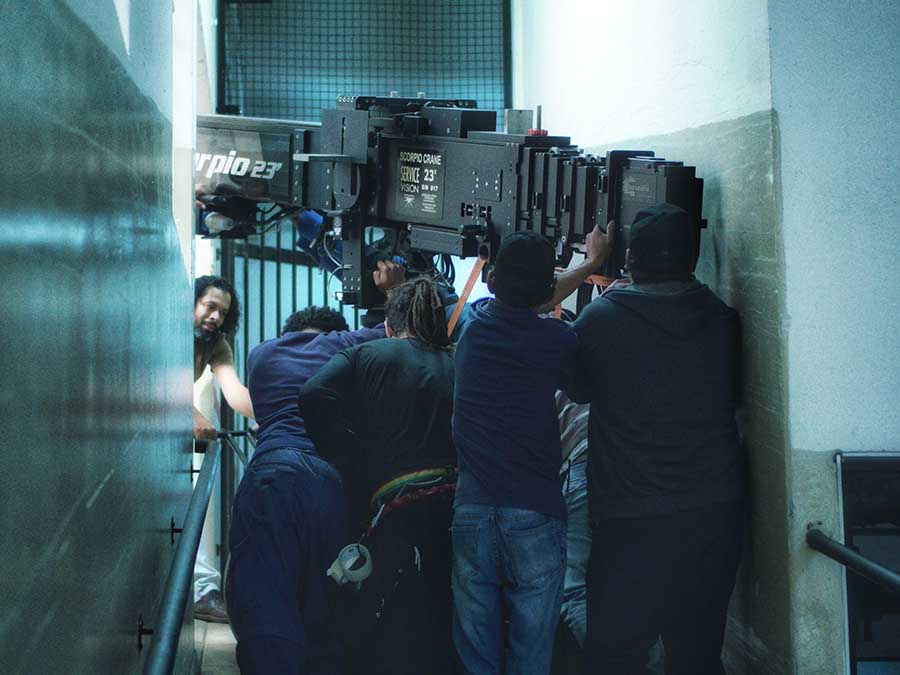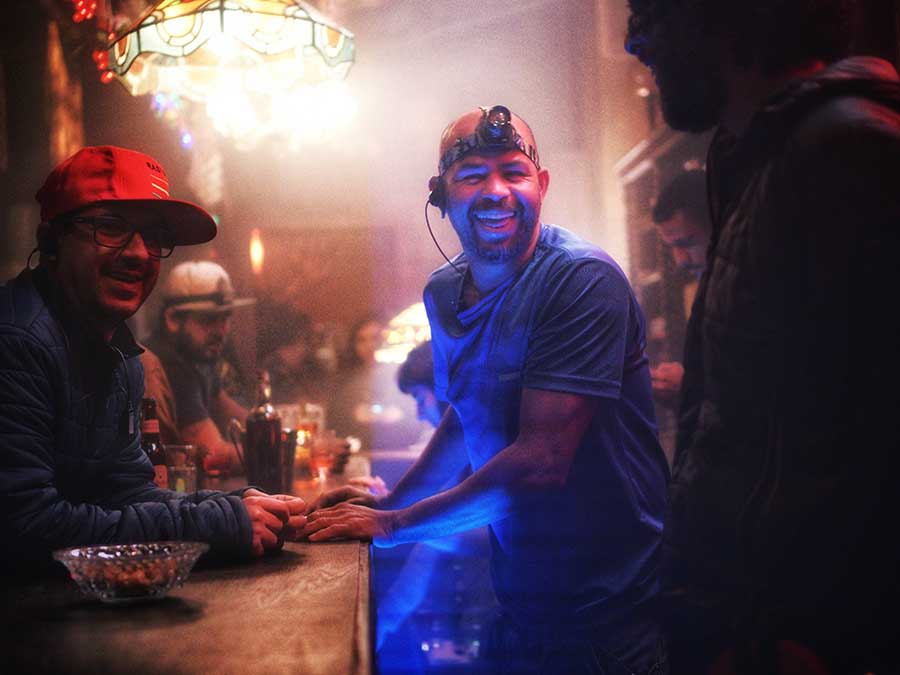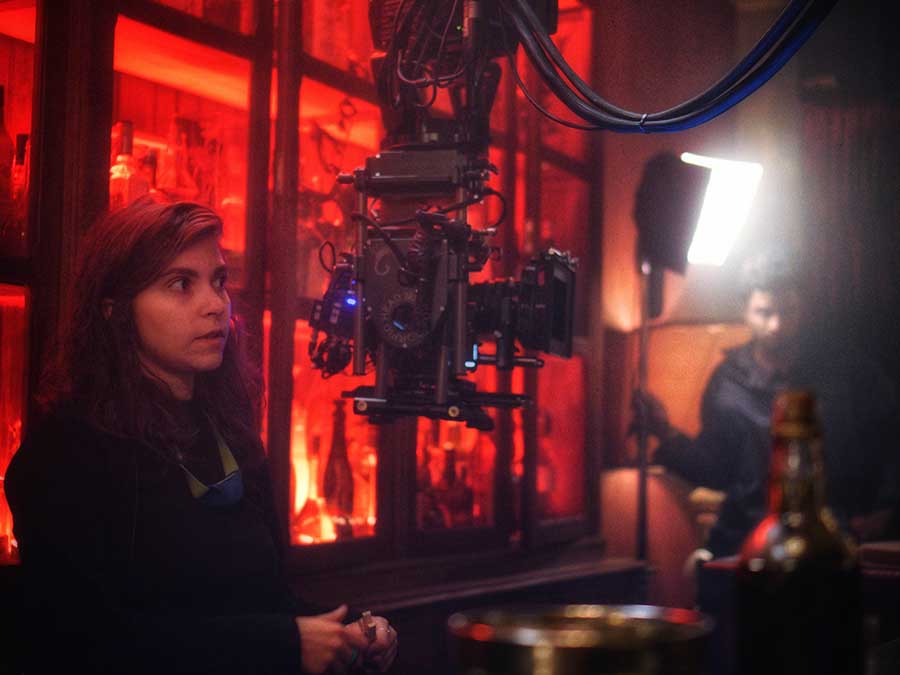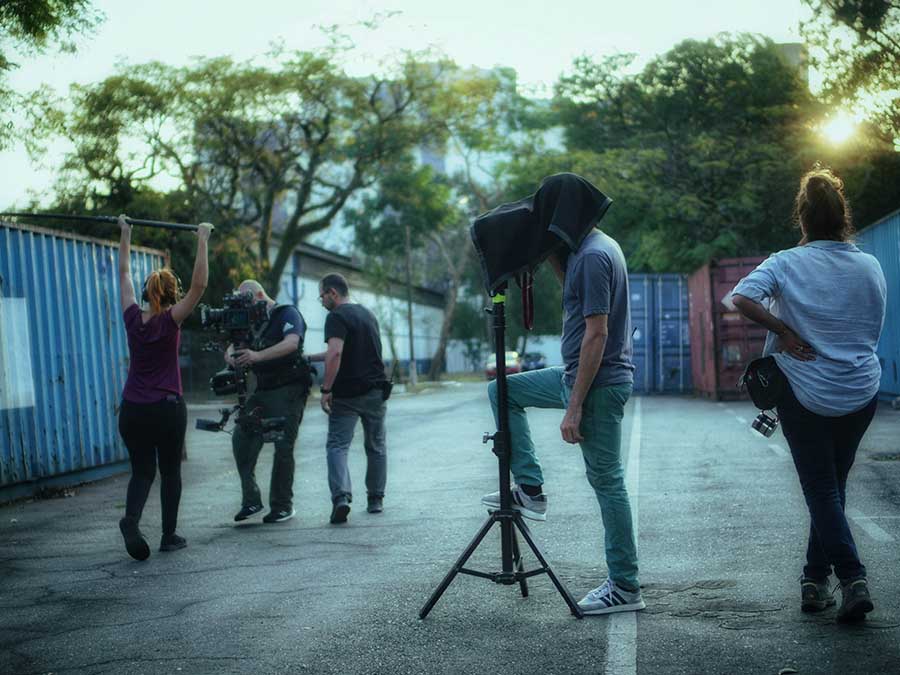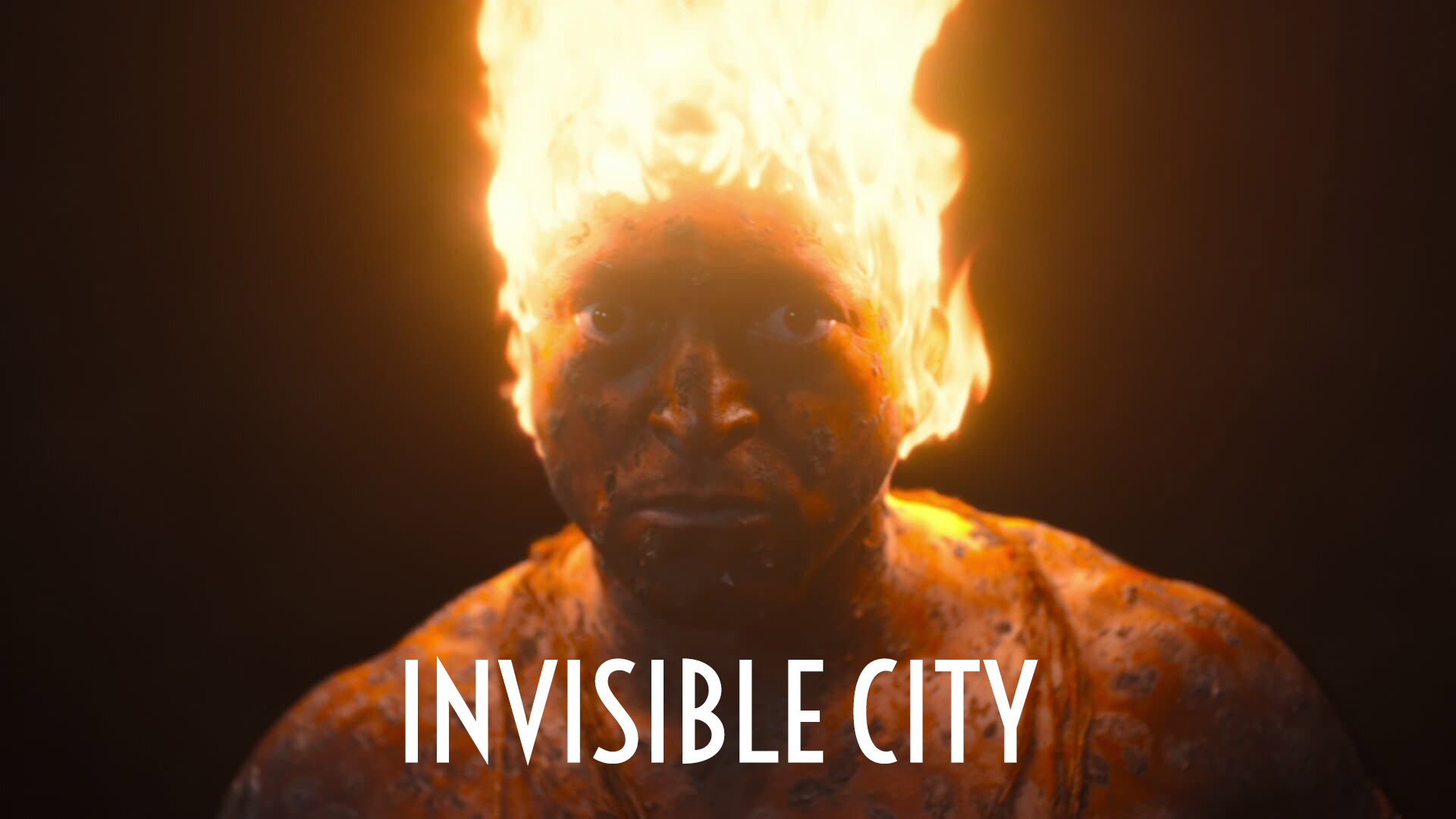
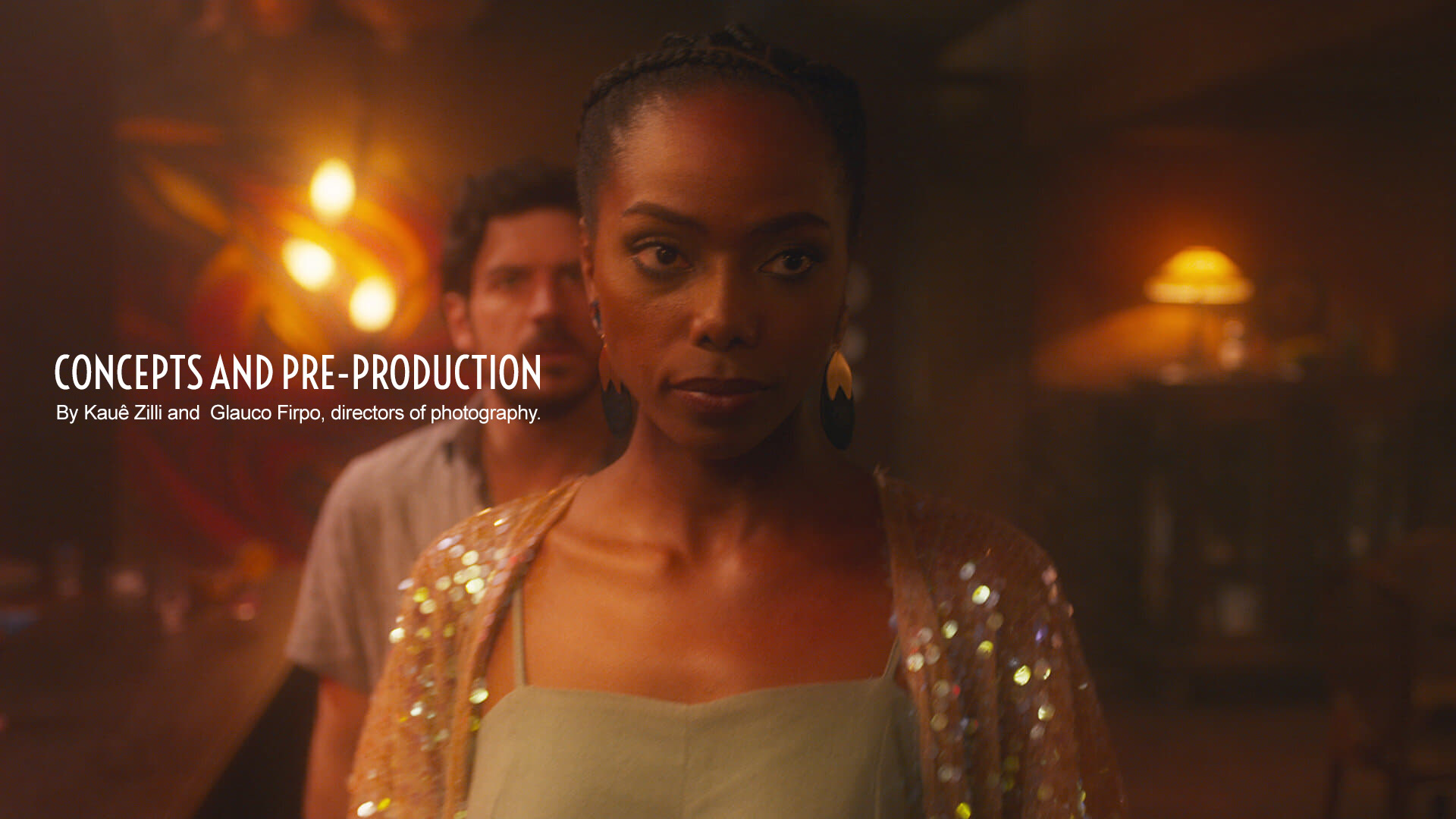
Invisible City is an original Netflix series that tells the story of Eric, an environmental cop who loses his wife in a mysterious forest fire. When he starts to investigate what happened, he comes across fantastic beings that inhabit the world in secret. It is an investigative series with suspense and mystery that brings Brazilian folklore to an urban and current universe.
To create the series’ visual identity, we started from the idea that beings inhabit the same world as us and can be anywhere, but nobody knows they exist. Together with Carlos Saldanha (creator of the series), Luis Carone and Julia Jordão (directors) and Fábio Goldfarb (art director), we decided to adopt a certain naturalism in aesthetics to disarm the viewer from the fantastic factor, which also made the characters’ powers arise more intensely when they manifest. A reference brought by the director was the Swedish film “Border”, which has a naturalistic and not so gloomy look, despite being about two trolls. We looked for a lighting design that wasn’t too stylized in general, that didn’t draw attention to itself, but at times we added a more visual “spice”, because there was a fantastic world behind it. We dosed this according to the manifestation of what this “magic” would be. For example, on bluish nights, there is a magic moon, which enchants and is always present in the scenes that show the origins of each of the characters or in the internal locations, in sets such as the “Cafofo” bar and its basement, which is the kingdom of “Cuca”, place of witchcraft and den of “strange” beings.
With that in mind, one of the challenges was to transit between these worlds without generating a sudden estrangement, in addition to maintaining a photographic consistency between the two of us. To accomplish this, we sat down to organize the visual references that we liked for this project and so we started to walk towards this unit, in addition to aligning our affinities and reflections on the cinematographic universe of the series. From these conversations, we set up a moodboard with these images, which also served as a presentation to Netflix of the aesthetic proposals from all departments: direction, photography, art, makeup, costumes, soundtrack and special effects. This presentation was important to adjust expectations and make the series more consistent.
An important recommendation from Netflix is the Look and Feel, a costume and makeup test we did with the cast to approve the look of each character, already using the camera and lenses we wanted to work with and a preliminar color and lighting plan. As it is a series that has many special effects, we took the opportunity to test some of them. For this, there was a game plan with the heads of the makeup department Luiz Gaia, costumes David Parizotti, art Fábio Goldfarb, special effects Juliano Storchi, directors Luciana Baptista and Thiago Villas Boas and producer Renato Rondon. For the cinematography department, we would first need to decide on the equipment.

For camera we chose the Red Gemini 5K, both for its image quality, having a good resolution for VFX, but without being heavy for set and post workflow and for having a nice texture due to its pixels, as for its low-light mode (ISO 3200), which helped a lot the night shoots in the forest.
As far as optics, for indoors mainly, we chose Leica Summicron-C lenses, which generate a pleasant image, with a beautiful quality of flare, consistency between the lenses and a vast kit (15/18/21/25/29/35/40/50/75/100/135mm), which were determining factors to use in the most limited spaces with two cameras and the various points of light in the scene. For most exteriors, especially the forests, beaches and the Lapa neighborhood in Rio de Janeiro, we chose Zeiss Superspeed T1.3 lenses, which have a more limited kit (18/25/35/85), but are faster lenses with a texture that we really liked. They were chosen for their bokeh quality (blur texture), especially in nature, for their speed at nighttime in the dense forest, and for their ease of having a more restricted depth of focus in environments with unwanted background, such as in scenes from Lapa , where it was important to blur the funds as it was very difficult to control the movement of people in the neighborhood. In both cases we use Glimmer Glass 1 filter to create a more diffused transition in highlights and smooth the sharpness of the digital sensor.
With the camera equipment decided, we started planning what effects we would like to test and what situation we would create for each character in Look and Feel. We tested possible costume options and possible climates for environment, light, camera angle and optics. Fábio Goldfarb brought some of the color palette he was thinking of using on the studio walls and we “painted” everything with different light colors and intensities.
For police officer Eric, played by Marco Pigossi, who is the protagonist, we investigated how to enter his subjectivity with the camera and which lenses would work well for that (we like the 29mm). We also tested the effects of the “Dry Body”, how it could suck the soul and what Luna (Manu Dieguez) would look like when possessed by it. These effects evolved a lot in the final version and we discarded, for example, an idea of leaving the actual skin dry.
It was the first time we both worked with Netflix and it was an experience that brought us a lot of maturity. The Look and Feel test was essential in bringing unity between the photography, art, costume, makeup and effects departments, allowing for smooth adjustments before we started production. It’s an interesting process, with lots of conceptual discussion and hands-on testing. The project only gained from this.
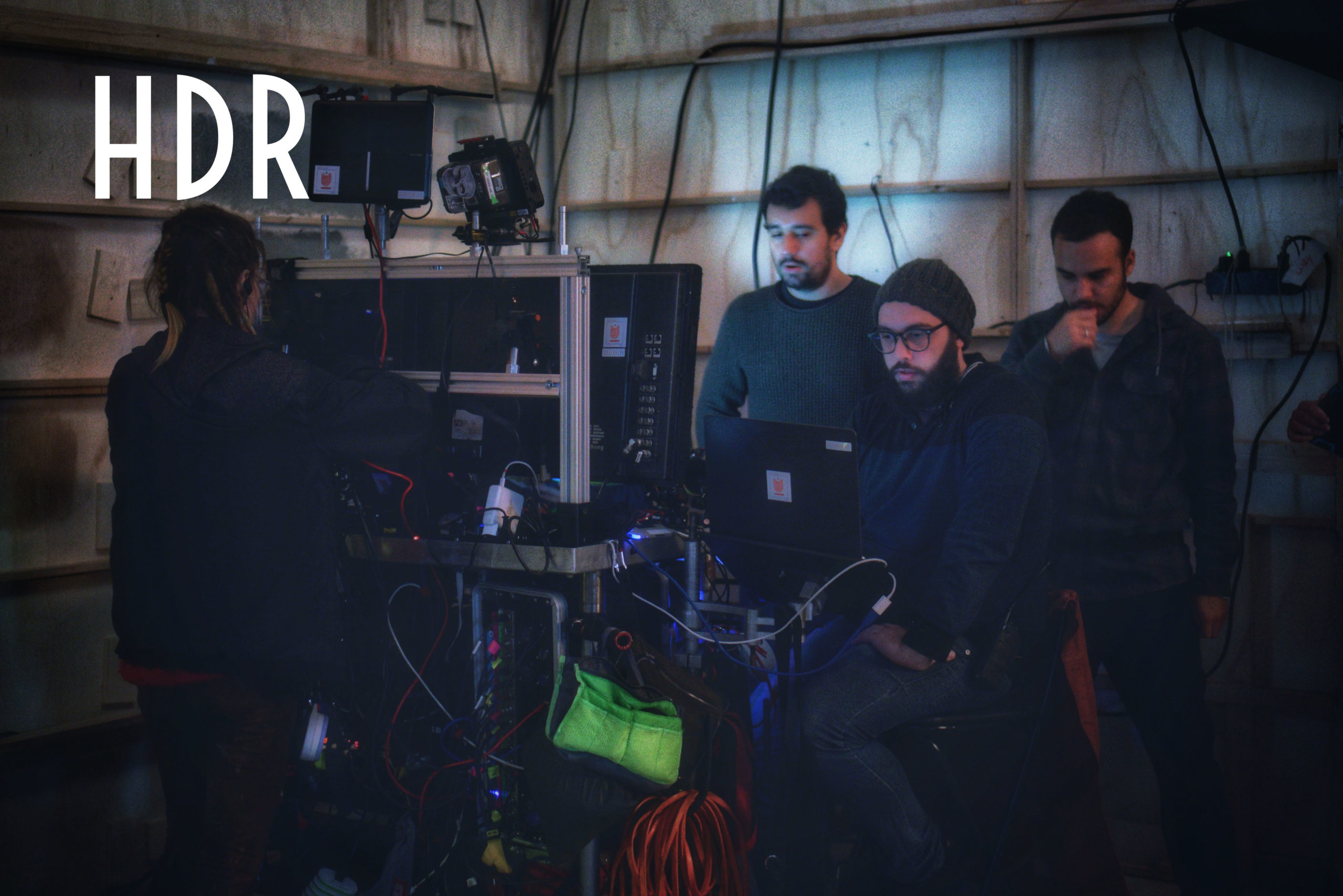
We did a workshop with colorist Ely Silva at Dot Cine, where we were able to explore the narrative possibilities and techniques of HDR (High Dynamic Range) finishing and understand how this influences principal photography. The fact that we have a wider latitude, a wider color range and greater luminance in the exhibition, led us to be much more careful in the exposition, in the “health” of the captured file and in particular with the highlights, which, according to frame composition and source intensity can become a narrative “noise”, drawing a lot of attention. We took these precautions to set, where we filmed everything with a lot of control over the intensities, in a way that allowed us to adjust these highlights in post. Matheus Cury, our DIT (Digital Image Technician), was essential in this process because he was in a tent with calibrated monitoring and exposure tools (false color and waveform), along with gaffer Marcinho Lima controlling the levels of the lights and reflectors for adjustments within these limits. Also, we recorded several scenes with ISO 500 or 640 to reduce noise in shadows. The HDR finishing was done with great care by colorist Luciano Foca at O2’s Post Department. It was an incredible experience, as the HDR has a greater three-dimensionality in the image, allowing us to explore a larger exposure window in highlights and shadows. The result is a pleasure to watch.
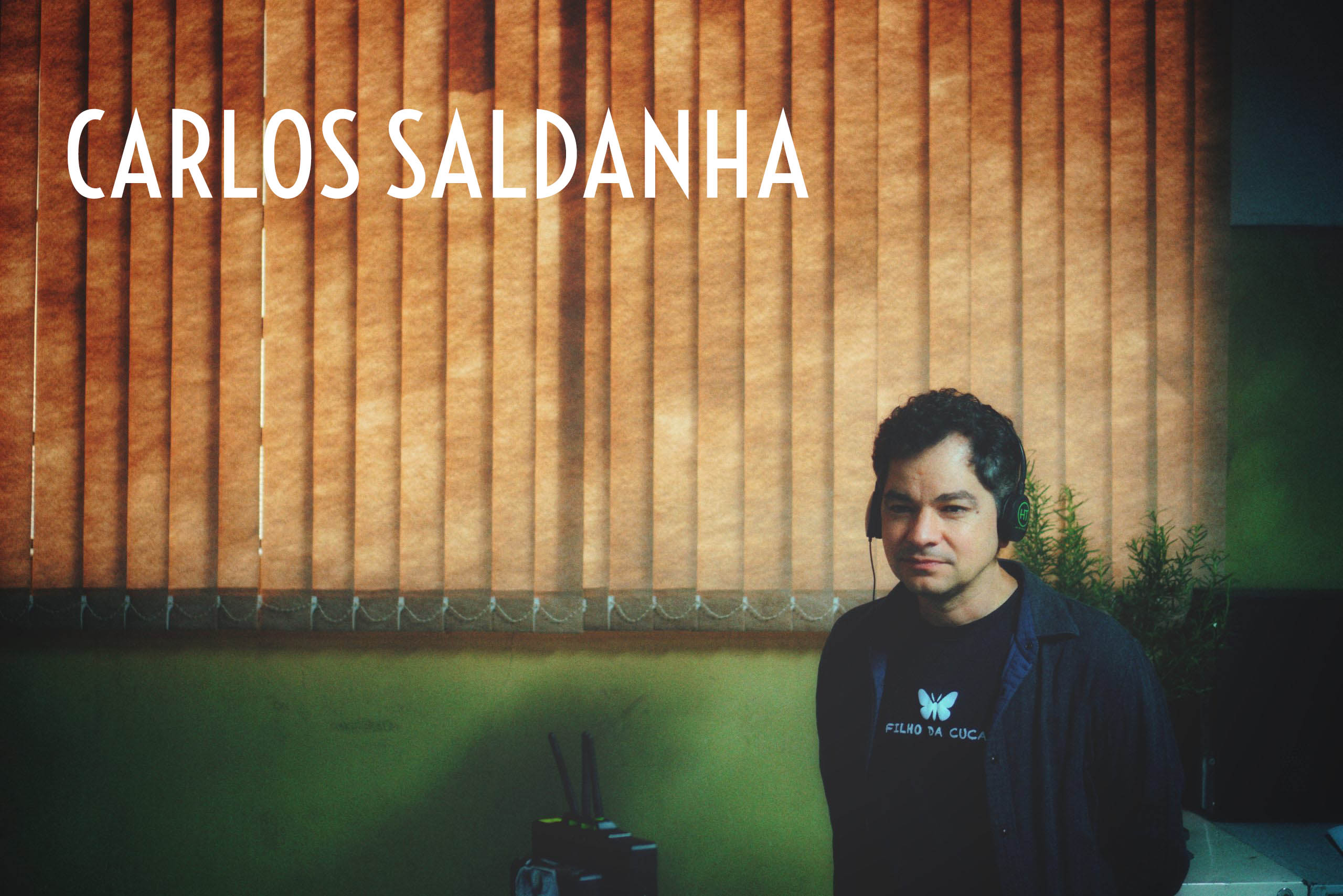
A tireless person and essential to the overall unity was Carlos Saldanha, creator of the series and our showrunner. This was his first live-action project, which he would initially follow from a distance. But his love for the series and for this universe he created didn’t leave him very far away, despite living in another country. He was in his corner, by the monitor, always in a good mood, making small and discreet adjustments to the narrative when he thought it necessary. Every now and then, he’d come up with a great idea that he would take to the script. This made the process even more organic, allowing the series to transform a lot during the shoot. In the scene where Cuca enters Eric’s mind, for example, Carlos’ animation expertise inspired us to create a sequence shot that crossed the rooms with lights that turned on and off. He even took the opportunity to do a steadicam workshop with Rafael Sahade.
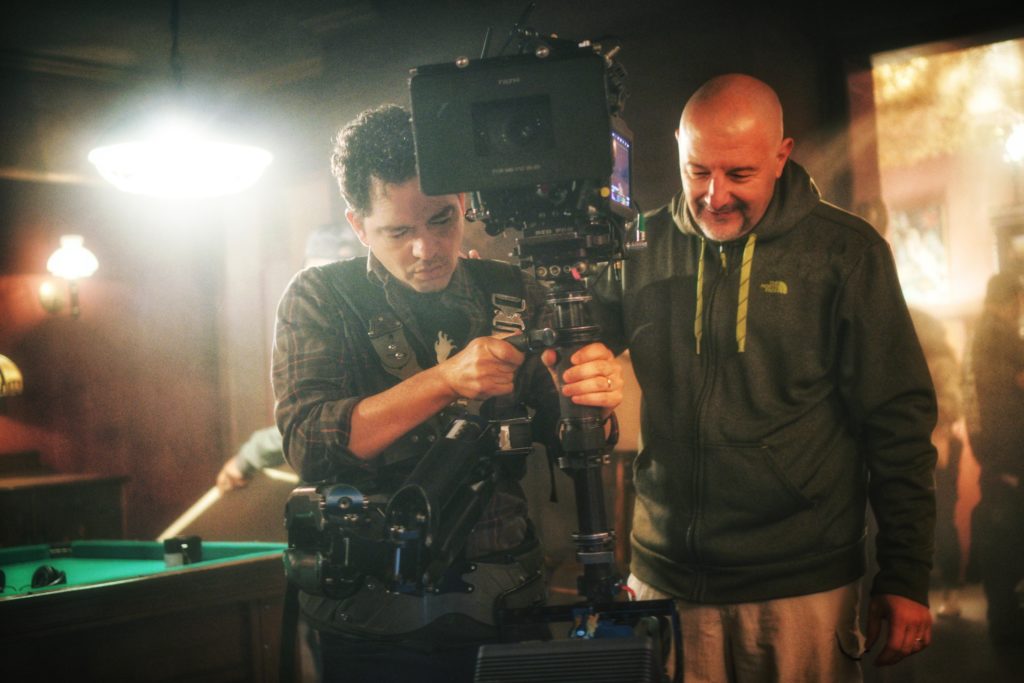
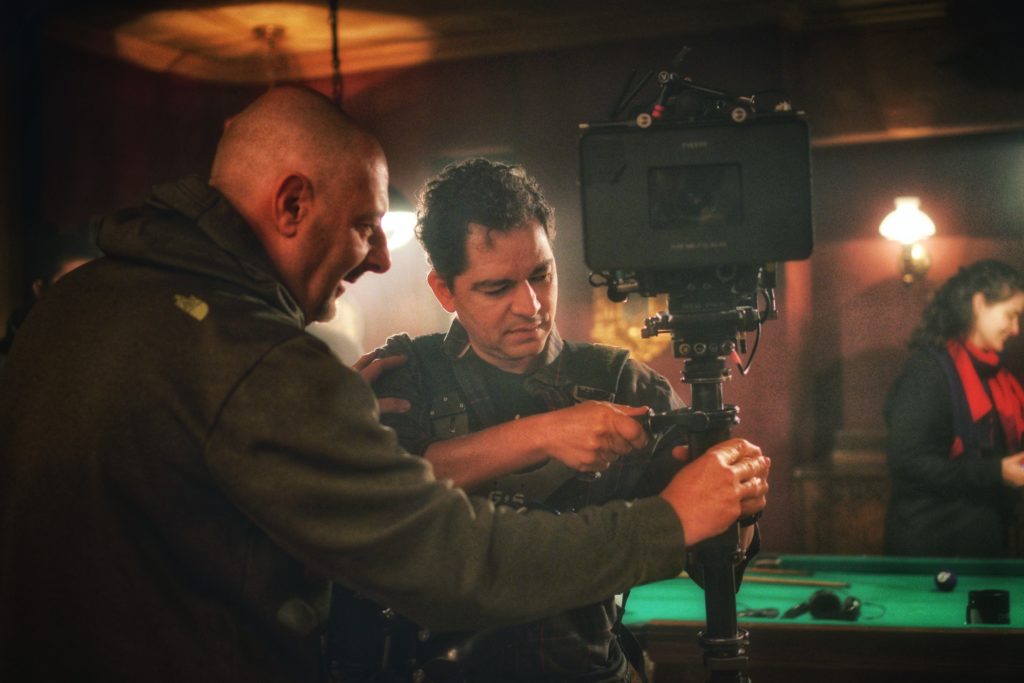
CINEMATOGRAPHY UNITS AND UNITY DURING PRINCIPAL PHOTOGRAPHY
Director Luís Carone and director Júlia Jordão
We shot for 13 weeks, with two directors, Júlia Jordão with 3 episodes and Luis Carone with 4 episodes and the general direction. We cinematographers took on different days. Kauê did the first 6 and a half weeks. Glauco did the rest. In this division, Kauê stayed with the sets built in the studio (Eric’s House, Cafofo, Basement, Police Station and other smaller sets), the internal/external construction company and the external of Eric’s house, Police Station and Occupation. Glauco got the exteriors of Vila Toré, Lapa, beaches and forests. We even had a day with the two units together, filming close together, but in different environments, without compromising. We also had aquatic cinematography by Lucas Pupo in Camila’s scenes, aerial with drone by Renato Passarelli and additional cinematography by Tomaz Viola in Curupira’s family scene.
We had very different set rundowns, but in some scenes we had to integrate internal and external. As we left Cafofo on the street, for example, we even made a plotter backing with a photo of Lapa at the end of a hallway, inside the studio. Color correction and art direction were important to give more consistency to these transitions, in addition to the previous meetings, we had to align everything. Rafael Sahade’s rhythm and steadicam language also helped to create a consistency for the visual narrative of the series as a whole. Each of us helped with our own seasoning, but everything together became a single meal.
RAFAEL SAHADE AND THE SINGLE-TAKES
Having a steadicam operator like Rafael Sahade made a big difference as an investment for the narrative and he was present in practically every scene. He has an intensity with the camera and an incredible eye for narrative opportunities, valuing the actors’ gestures and never letting anything slip. Besides, he’s an intellectual guy who studies the script thoroughly and knows the characters. This was essential to the dynamic narrative rhythm of the series, which brought a unity to the whole.
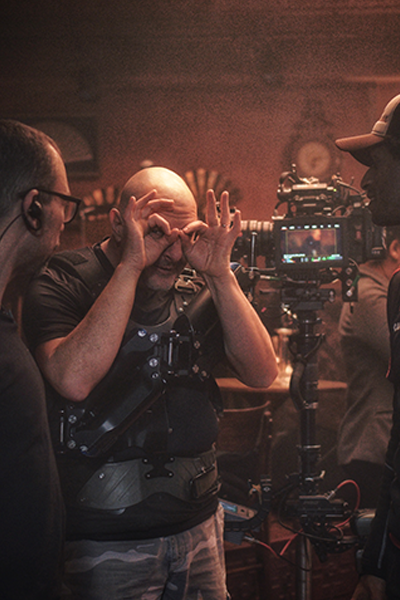
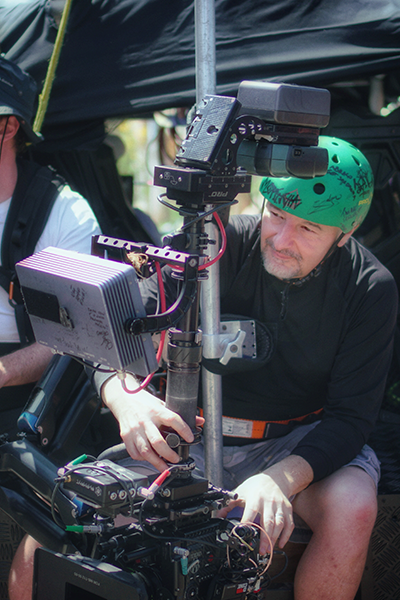
Rafael Sahade probably joined the project before us. In the first meeting, Carone already spoke of him as an amazing operator with whom he had worked in the series “O Pico da Neblina”, tireless, always in a good mood and with a badass narrative instinct. We had already heard about him and were excited about this partnership. Along with this, he also exposed the desire to have the camera free to circulate widely in sets in single takes, something that was carried over to lighting design and fueled the concepts we had for this cinematography.


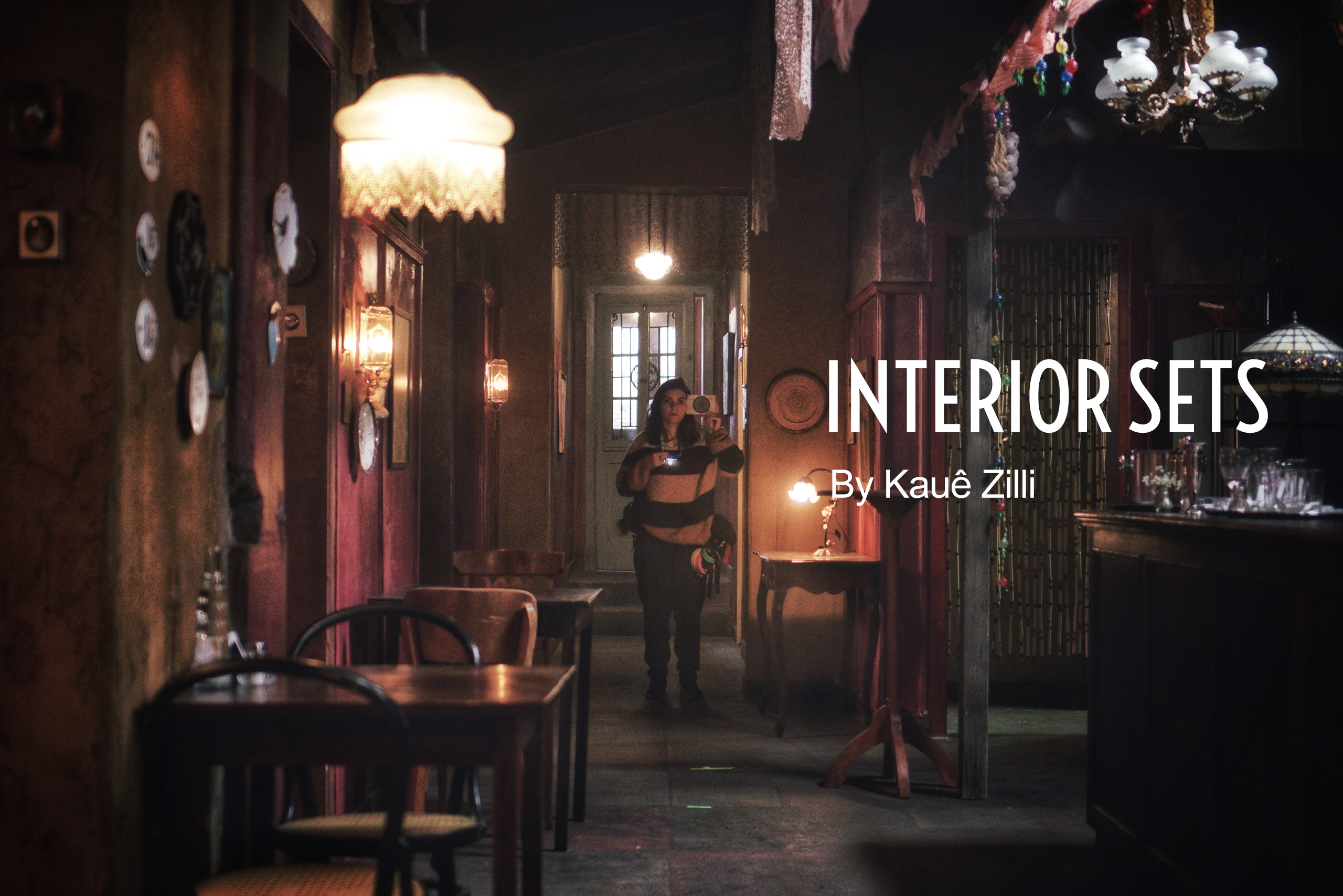
As I would be responsible for the cinematography on the sets, I had very close and productive conversations with art director Fábio Goldfarb in pre-production. We would go into the designs of the sets in Sketchup to make a preview and understand the camera angles and where we would need to cover with a roof. He explained the textures he would put on each part. In these conversations, we talked a lot about the practicals present in the spaces, where they would be and the quality of the light they would produce. We also talked about the texture and materials of the curtains and what types of glass the windows would have. There was this essential intersection between photography and art. What illuminates or motivates lighting comes from the environment. A close alignment in pre-prod made all the difference.
One of the main challenges of my stage was to keep the viewer immersed in the veracity of these environments without noticing that it’s all built. Careful planning was crucial, also because we would move the camera around them freely in the single-takes. The fluid and generous relationship with Fabinho’s art team made it a lot easier and their talent is visible when we watch the series.
ERIC’S HOUSE
The first set we entered was Eric’s house, where we had a lot of scenes both during day and night and it would take a quick switch between these two light settings. Me, gaffer Marcinho Lima and key grip Gerlando Santos sat down to think about this light map and what structure we would need. We used the iPad app “Luminair” to control the lights remotely so we would have a quick switch between “day” and “night” setups, as well as fine fingertip adjustments. This made all the difference in our agility!
I really enjoy working with the floor plan to work out how I’m going to light up the scenes, making it easier to see what is possible. In this project, I assembled the lighting maps using the objects from “Film Set Objects”, mainly in Photoshop.
Here’s a video I made during the pre-light, which starts by showing our structure outside the stage and ends up entering Cury’s tent (DIT), where we see the frame in which I walked around the house to test how the light was behaving. In this test, we used a little haze, which we ended up discarding because it would lose agility to keep it at the right level and because it deviated a little from the “naturalism” we wanted for the environment. Special credits for the super stand-in and 2nd AC Maíra Labrudi and the freestyle focus made by 1st AC Bruna Moraes.
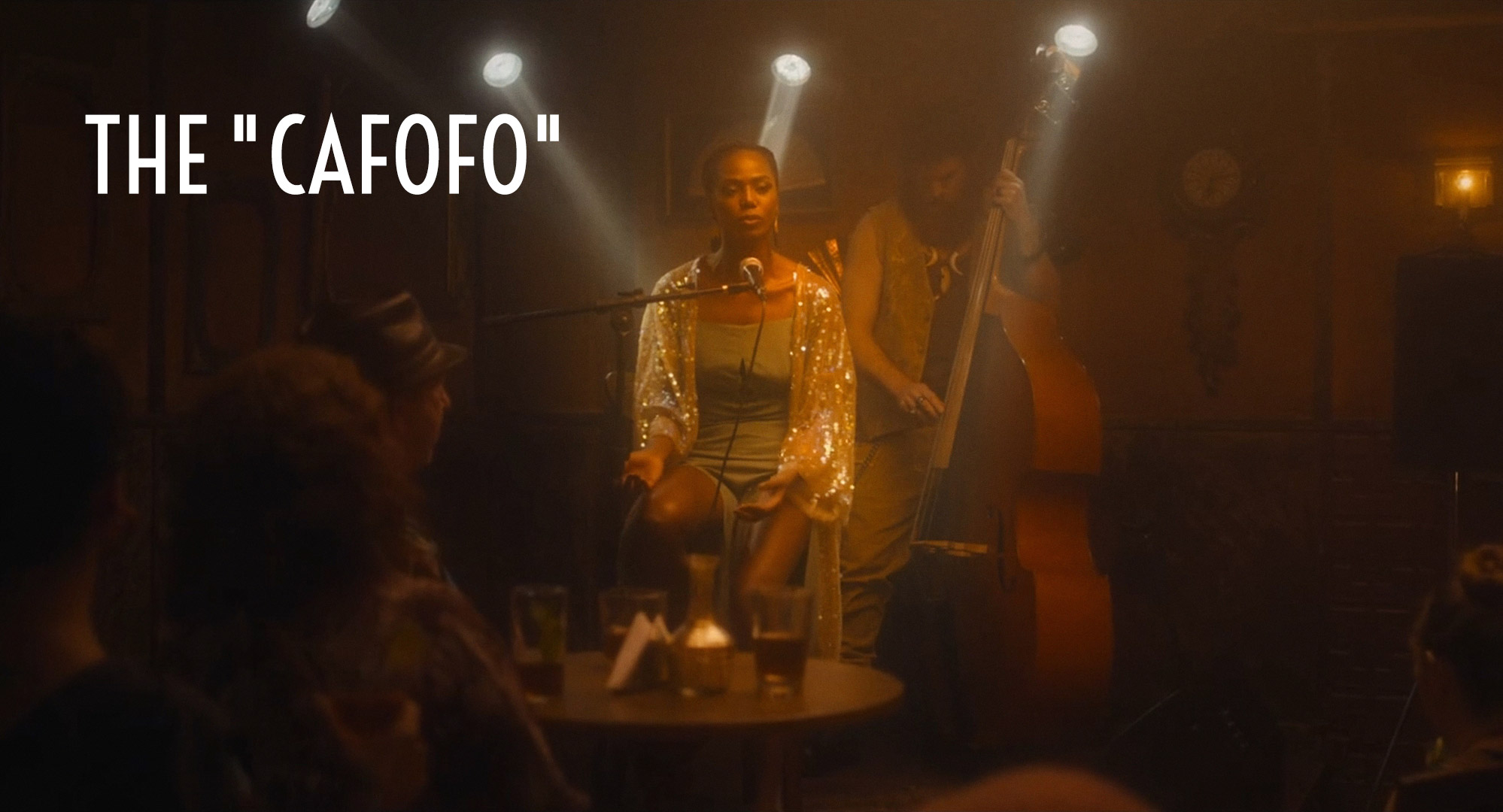
These are my favorite locations on the show. In them, I had greater freedom to “dare” with photography, bringing a little of the “magic” of the characters that inhabit this space to the light and atmosphere (with a haze machine all the time). To start with, the set that Fabinho created was already full of textures and objects that referred to a universe of witchcraft, with potions and herbs scattered throughout the environment, something that is even more remarkable in the basement where Inês’ character (Cuca) lives . Added to a color palette where warm tones predominate, this ensured a very unique identity for these environments, which I like a lot.
From there, I sat down with gaffer Marcinho Lima and art director Fábio Goldfarb to think about which lighting motivations would be interesting to bring to these spaces, giving the camera and actors greater freedom of movement, but still preserving the atmosphere we wanted. On the ceiling of the dance floor, we placed lycra fabrics with a painted texture. Above them, we hung Velvet Light Panels, which are LED and bicolor, so we could easily fine-tune the intensity and color according to the scene. This created a soft, warm light in this room.
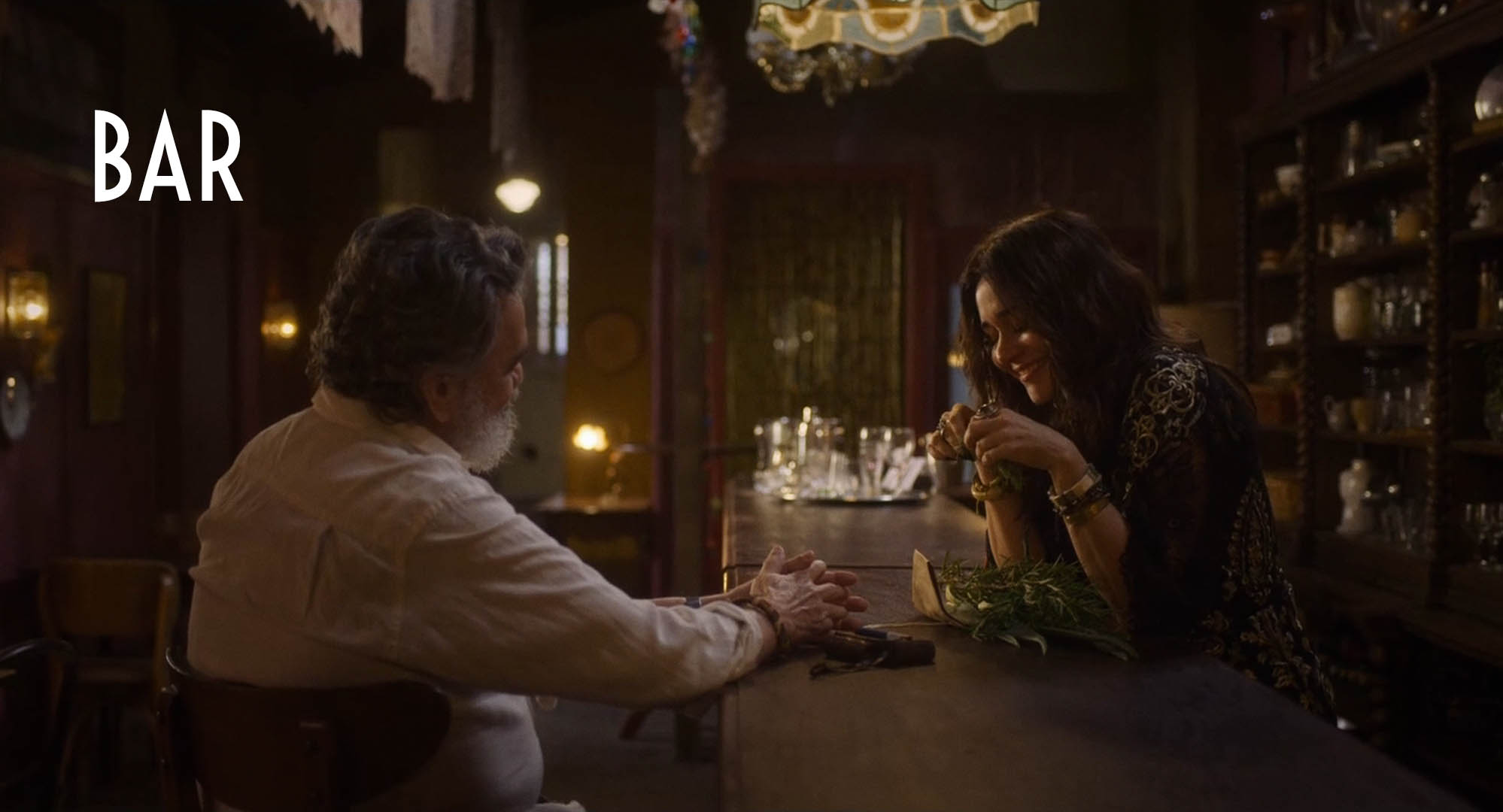
At the bar, we put a red LED tape behind the drinks. This brought a tone that went very well with the color palette of the backdrop. I like how it sometimes becomes a fill, sometimes a key light and sometimes just something in the background. The chandeliers and other lamps were on the Luminair app too and we controlled it according to the camera axis. On top of the bar, we had two Kinoflo Select LED 30s hanging, which were used to “push” more the intensity of these chandeliers in the “night” and bring more the ambiance from the outside to the inside in the “daytime”.
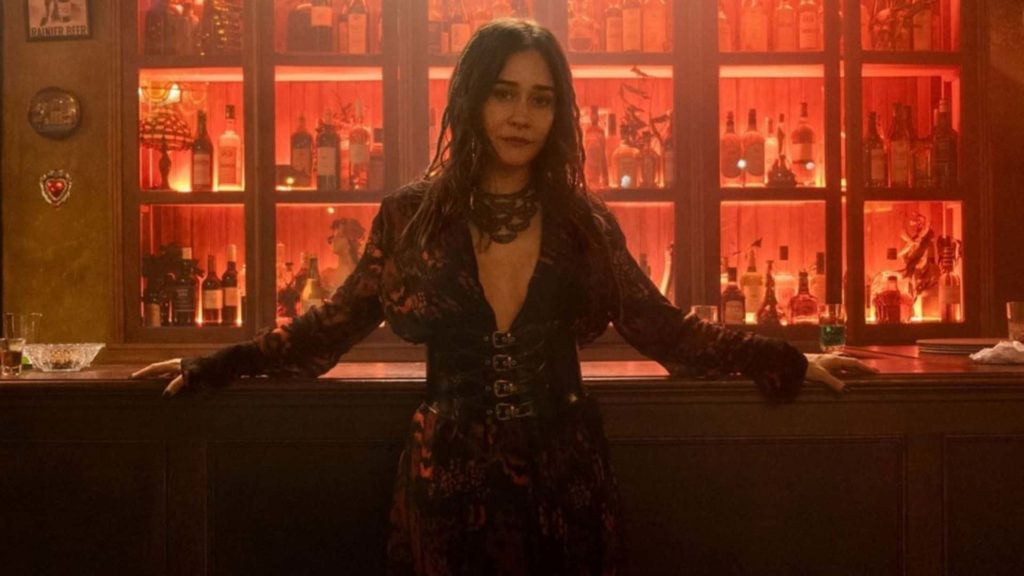
There are two scenes that serve well to show the mood of this environment. As soon as Eric entered Cafofo for the first time, we wanted the viewer to explore the space together with him to get a more general idea of this place. The second moment is when Eric notices Camila singing and enters her enchantment. We wanted to float along with Eric’s attention and go to Camila following her song. For this, we used a Scorpio 23’ crane, which has a retractable arm and allowed us to make a continuous movement from the bar to the stage, passing over the spectators’ heads. This shot was operated by Daniel Duran. In color correction, we further accentuated the glimmer glass diffusion with a glow.
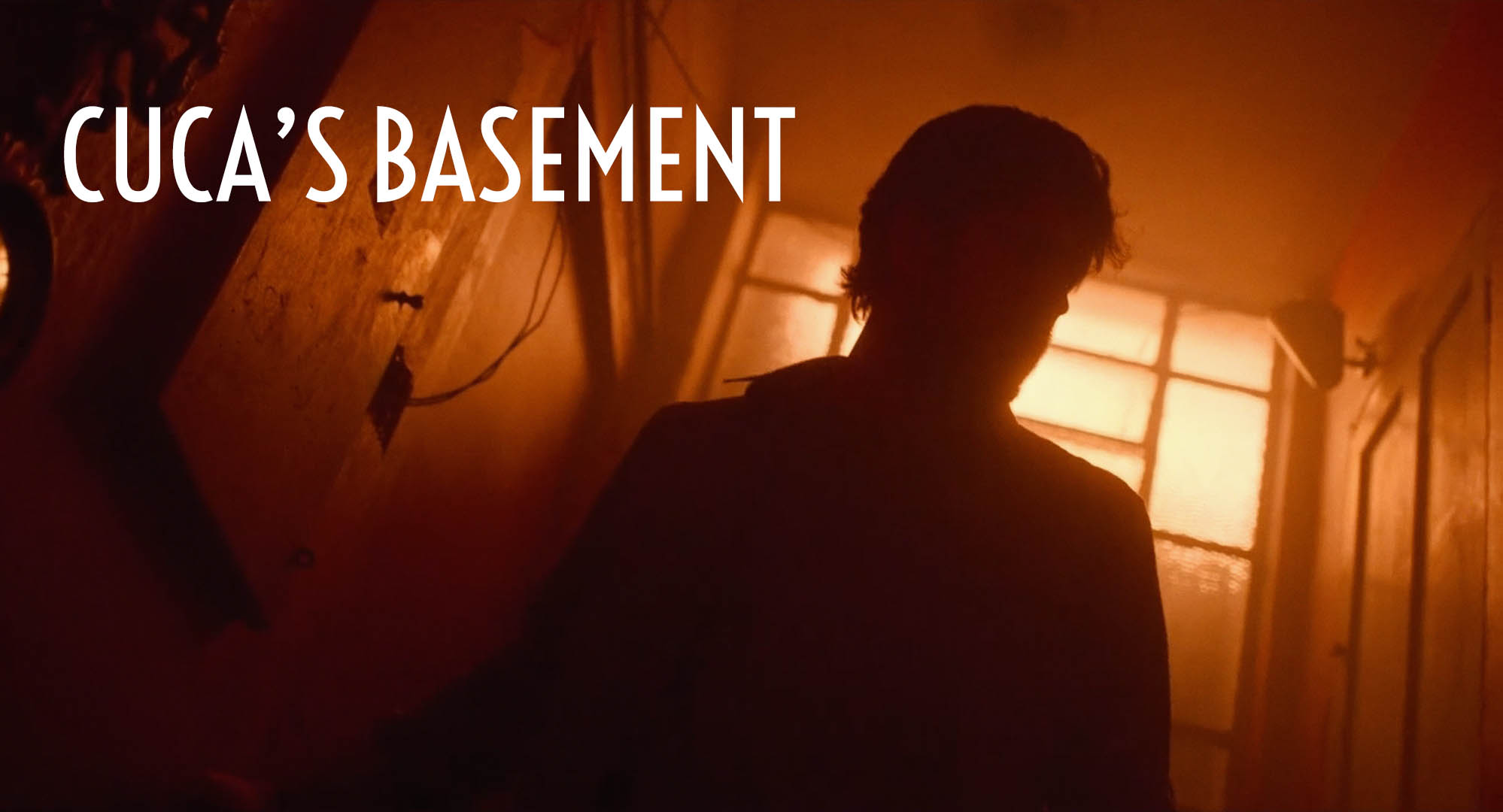
The bar is only the first level of Cuca’s home, but her biggest secrets are hidden in her basement, which is where she lives. On the way down, we wanted to change the tone even more, going down more into the “rabbit hole”, in the fantastic. On the stairs, we placed two SkyPanels in the windows to create a reddish light, as if it were the entrance to something organic and alive. Arriving in the basement, both the art and the cinematography department worked to create what we thought was appropriate for this sorcery environment. With the ritual objects, the dolls that connect with the origin of Cuca and the orange beams of light entering through the cracks from the outside, we wanted the place to pulse with magic. This light was made with a mixture of lighting from the art on stage, with the intensity controlled according to the camera axis. The beams were made with a lot of smoke and with Par 64 fixtures with Full CTS gels coming from outside, passing through the hollow brick wall. The light coming from the cracks in the ceiling was made with two 1K balloons.

At the police station, we wanted to create a visual rhythm in the depth of the frame with the ceiling lamps and one of our references for this was the movie Seven. They were our main source of light and, depending on the positioning of the camera, we covered it with a black cloth or diluted the exposure with some diffusion so that the light would bring the attention to the cast. As we were on a high floor and we needed to put fixtures outside to maintain a consistent exposure throughout the day, our key grip Gerlando came up with the solution of removing the glass from the windows of the neighboring building, which was about 15 meters away, to put the stands with the lights. We use a mix of 12K and 9K HMIs.
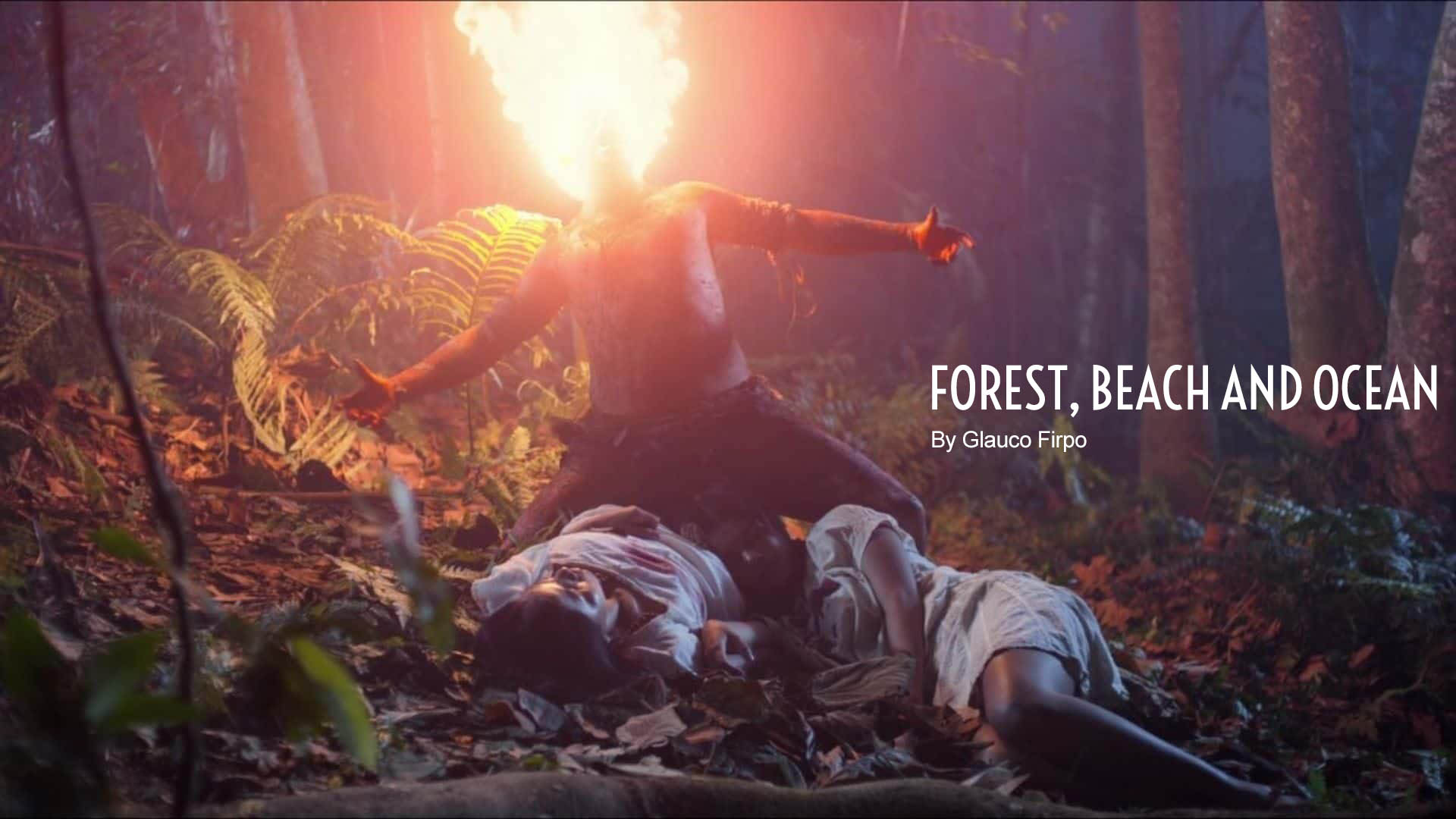
While filming was taking place at the Jairé studios, I started pre-production studying a lot and preparing the forest, which would be the first and greatest challenge. We found a location close to São Paulo, where we could simulate a dense forest.
That way, we had four weeks of pre-production. In the first week, we had tech scout trips to Ubatuba, where we would film Vila Toré. Then, we went to Rio de Janeiro to choose locations such as the outside of the cafe in Lapa, the beach where we found the dead dolphin and the location of Camila’s spell, when she takes Eric to the sea, and others.
Returning to São Paulo, we began to better understand our main location, the forest. We started walking to map out the places that made the most sense for the mise-en-scène of each scene according to the topography, the solar position, the density of the forest and the company moves.
So we spent a few days making Previz. We took a camera and filmed it ourselves, in order to understand the complexity, the functionality, the rhythm and whether it would be possible to film in the time we had allocated for it.
After these steps, we started a week of pre-light. As we had imagined for the night shoots, we made a moonlight foundation with 18K HMI and 8 more HMI’s spread around the forest, filling an imaginary circle. The forest being somewhat closed by the treetops, we spread six Space Velvet 5600K at a height of about 12 meters at some points in the inner parts of the forest, so that the lighting was complete, thus adding more sources of light where HMIS didn’t reach.
As a complement to the forest scenes, we used lots of haze, lantern lights and portable torches to light both the characters’ faces and the surroundings that were affected by the fire coming out of the curupira’s head.
For this set, we work with low light from Red Gemini ISO 2500 and almost always T1.3. We filmed for six days, between day and night, so that we could follow and fulfill our shooting schedule.
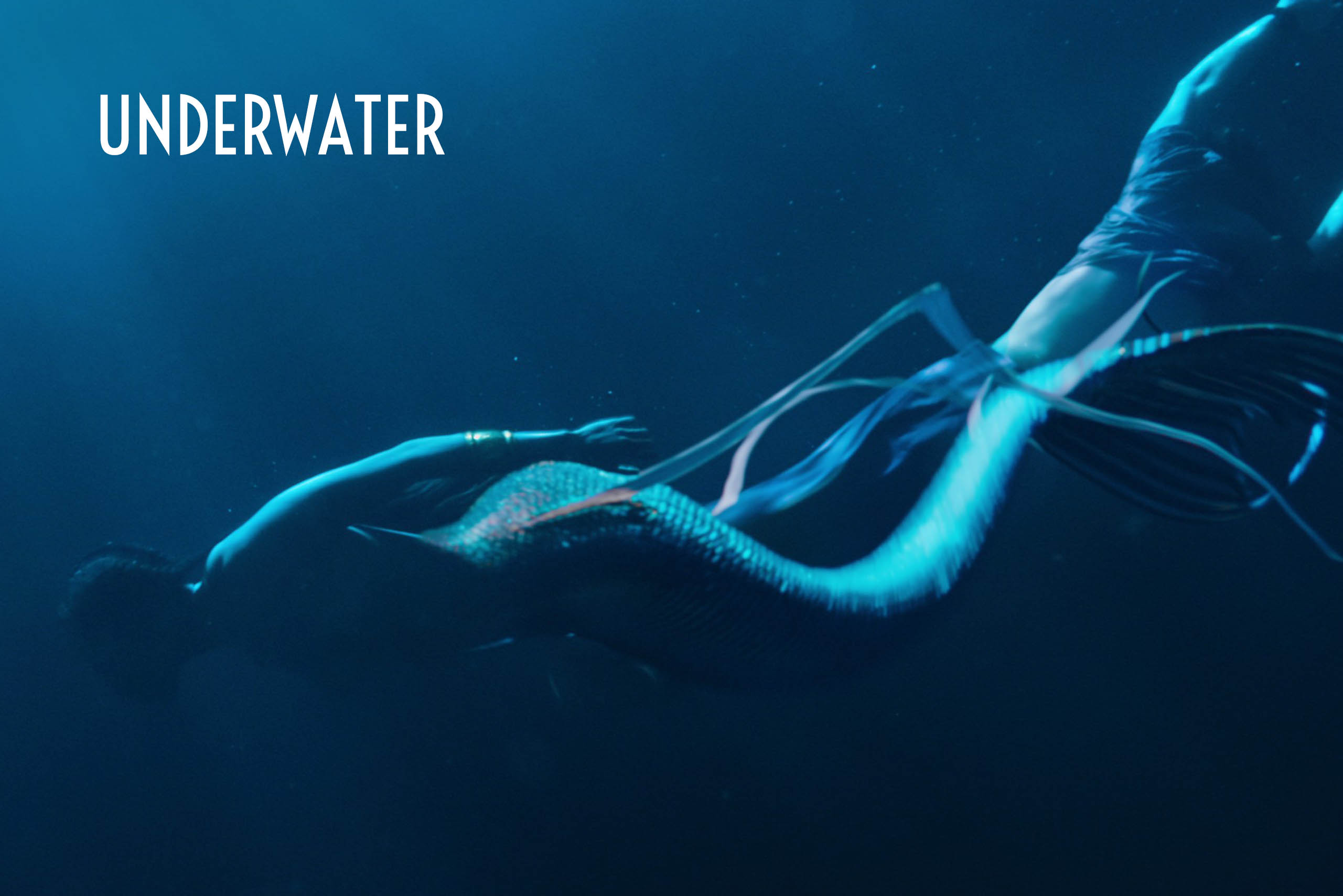
In the mermaid’s underwater scene, we had the participation of Lucas Pupo, a reference in Brazil for this type of image. It was difficult because we wanted the character to swim towards the bottom of the sea, pulling Eric by the leg. This implies a series of physical conditions for actress Jéssica Córes to be able to swim downwards without disturbing her ears because of the depth variation. The light was a HMI high above, like a moon at the top, and a few more things as a backlight. The pool allowed clear water and light control. We filmed in a tank covered in black cloth inside so that the tiles would not appear.

From the beginning, we knew that it would be a series with many visual effects due to the theme, especially with Carlos Saldanha and Luis Carone involved. The person responsible for supervising and producing these effects was Juliano Storchi, who, in addition to being very talented, was another very welcomed new partnership. Always around since pre to production, we had many creative and practical meetings about how to leverage what was recorded on set with (practical) special effects and what would be done in the post with visual effects. Because of this importance, we invited him to talk a little about his process and this subject.
VFX
By Juliano Storchi, Producer and Visual Effects Supervisor
It was a beautiful journey. Effects are super connected with photography. In fact, a good effect starts in the script. I entered the process when the project was still 15 pages old, right after it was approved by Netflix. I participated in the development of the script on a larger scheme, from strip boards to when it got to the screens, always with a narrative look. Being able to participate in the creative process from the beginning provides a good crossover, as the effect also tells the story as well as a character. Getting to post with dailies to then “fix it in post” is an antiquated way of thinking,, although it still exists. If it comes in as an accessory at the end, it’s hollow and you can’t quite believe what you see. I was present for all the process, practically every day on set.
We worked with four Brazilian post-production houses, which were Nash, Mosh, Dopo and O2 Pós. I made a breakdown of the effects that the series demanded and spread it among different special effects providers, trying to get the best out of each one. Each company had a character. Curupira, Iara and butterflies were made by different post-producers, for example.
We use the logic that less is more. Effects have always been prioritized for plot climaxes and to move the story forward. We wanted to show what those beings would look like if they really existed, from a skeptical point of view.
The original lights of the filmed scenes were essential references, as in the moments of the Curupira, the Mermaid and the Butterflies. All 3D effects only work if you have practical lighting as a guide. Once lights are set, we take a 360-degree capture of the environment, recording from the most blown out points of light to the darkest. We add up all the light information of the entire scene and generate a very high latitude HDR map, which serves as a basis for lighting the surfaces of the 3D models.
After the assembly of the first cut of the series, when we already knew what was going to come in, we did an effects diary and simulated, in a studio, the movements of the Curupira. The final effect is a combination of reality and simulation.
THANKS AND MAKING OF
By Kauê Zilli e Glauco Firpo
Cinema is this beautiful art that doesn’t happen without a collective collaborative effort and this project was very special in that sense, with a team of amazing people, full of talent and a lot of love for what they do. We want to leave a super thanks to everyone involved in this mega-pleasant process that you certainly brought to screen and especially to our cinematography team… You guys are awesome!
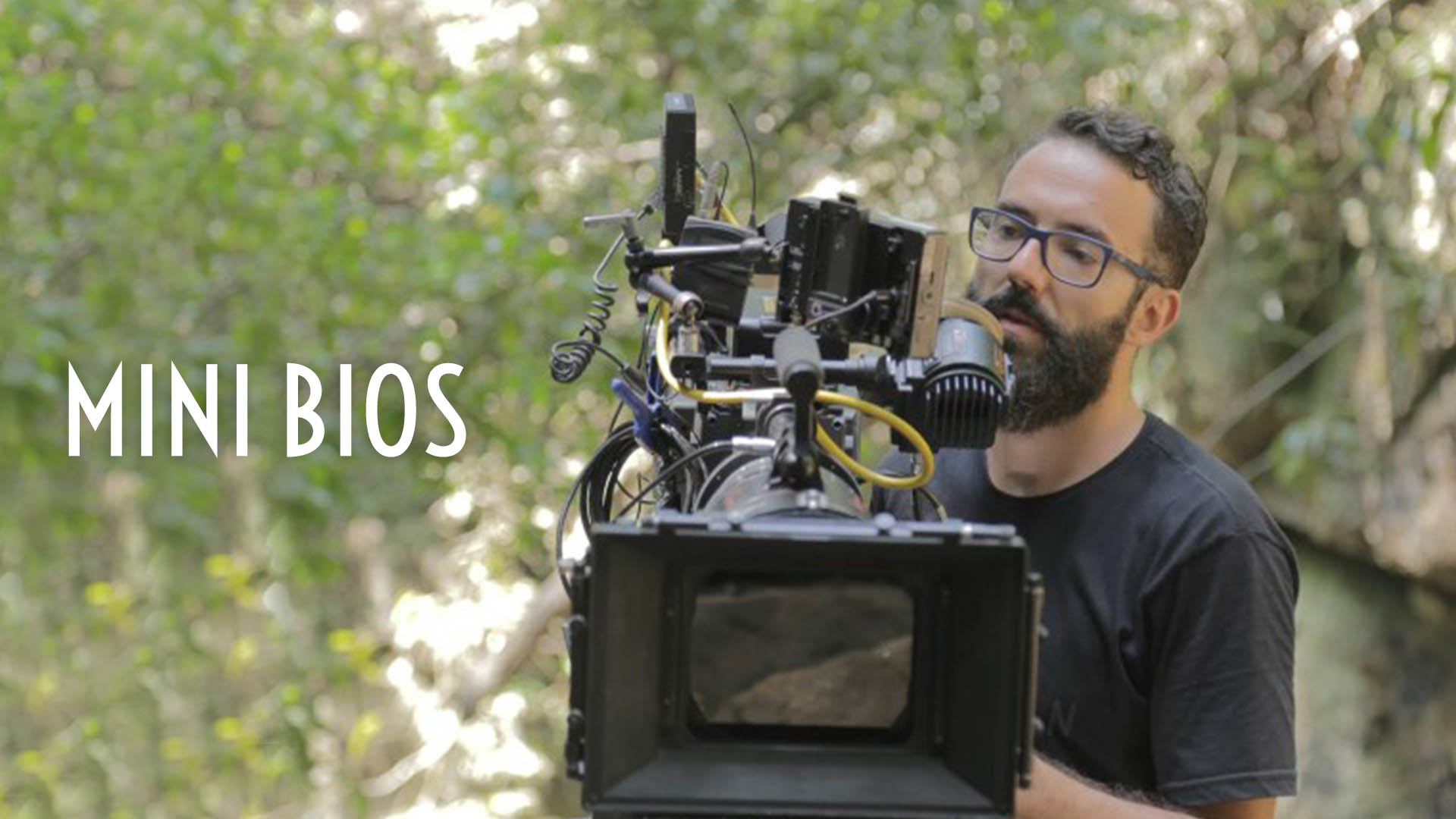
Glauco Firpo has been a cinematographer for more than 10 feature films, 23 short films and 13 TV series, in addition to commercials, music videos and other platforms. Among these works are films such as “Volume Morto” (2019), by Kauê Telloli, “O Segredo de Davi” (2018), by Diego Freitas, and “O Diabo Mora Aqui” (2015), by Rodrigo Gasparini and Dante Vescio , and the series “Hard” (2020-2021), by HBO, “(Des) Encontros”, by Sony, “A Vida Secreta dos Casais” (2017), by HBO, and “Zé do Caixão” (2015), by TNT-Space, as well as music videos by artists such as Erasmo Carlos, Céu and Gaby Amarantos. It has been a finalist four times for the Associação Brasileira de Cinematografia (ABC) award and has also competed in the Brasilia Festival of Brazilian Film, Rio Festival, Montréal World Film Festival, Tallinn Black Nights Film Festival and Sitges: International Fantastic Film Festival of Catalunya . Born in 1984, in São Paulo.s
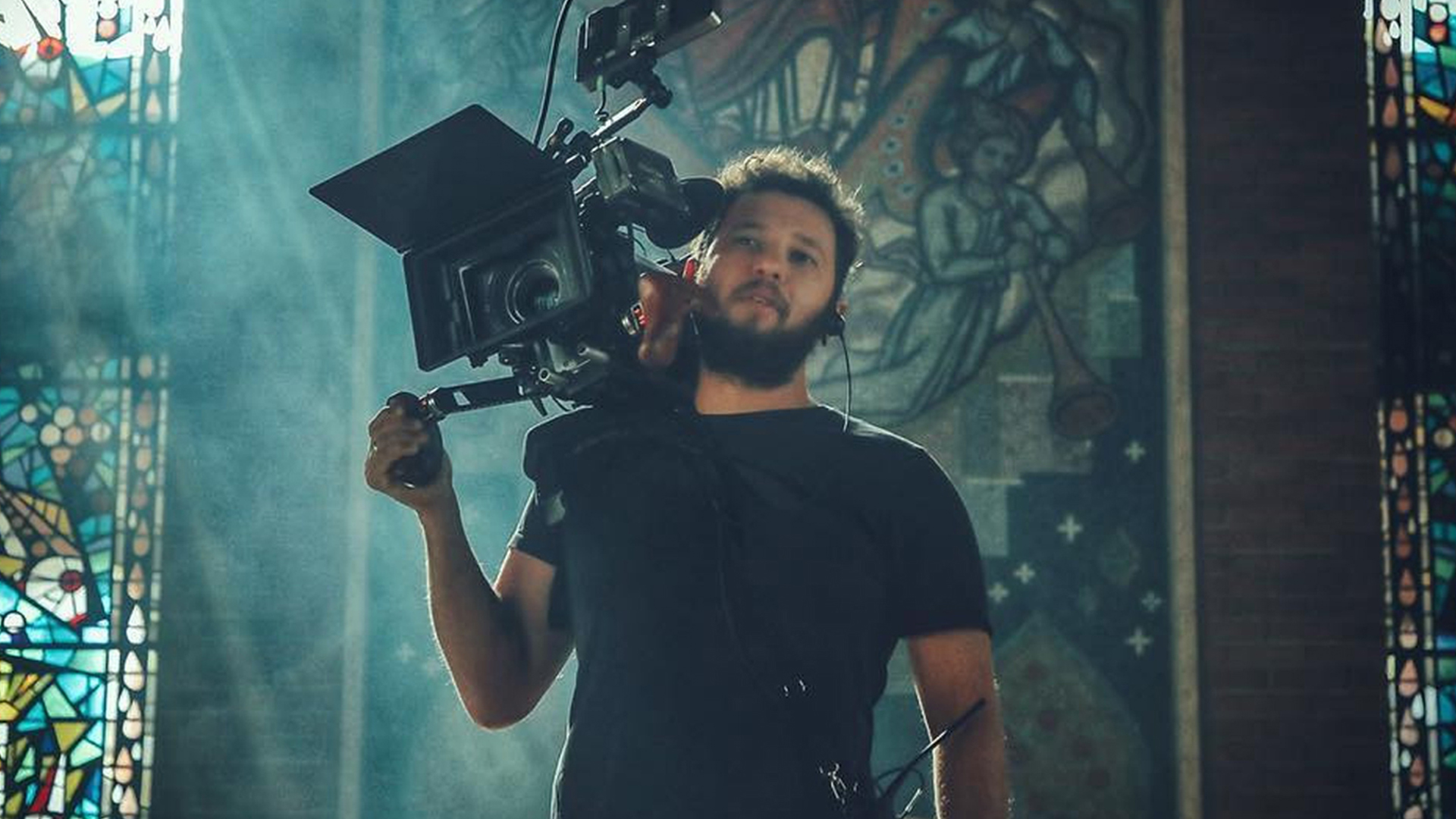
Kauê Zilli has been a cinematographer for more than 10 feature films, 23 short films and 13 TV series, in addition to commercials, music videos and other platforms. Among these works are films such as “Volume Morto” (2019), by Kauê Telloli, “O Segredo de Davi” (2018), by Diego Freitas, and “O Diabo Mora Aqui” (2015), by Rodrigo Gasparini and Dante Vescio , and the series “Hard” (2020-2021), by HBO, “(Des) Encontros”, by Sony, “A Vida Secreta dos Casais” (2017), by HBO, and “Zé do Caixão” (2015), by TNT-Space, as well as music videos by artists such as Erasmo Carlos, Céu and Gaby Amarantos. It has been a finalist four times for the Associação Brasileira de Cinematografia (ABC) award and has also competed in the Brasilia Festival of Brazilian Film, Rio Festival, Montréal World Film Festival, Tallinn Black Nights Film Festival and Sitges: International Fantastic Film Festival of Catalunya . Born in 1984, in São Paulo.s

